Victory Day in Nagorno-Karabakh
“Some conflicts demand urgent attention. Others are hidden away, apparently quiet but unresolved and the world risks waking up to them only when it is too late, when the threat of violence is again imminent.”
— Thomas de Waal
Last year in Nagorno-Karabakh—part of Azerbaijan but full of Armenians, I stood in the crowd and watched the annual Victory Day parade pass through the streets of Stepanakert.
Now war has returned and much of Stepanakert—the “capital”—is broken into little pieces of concrete. The nearby hilltop fortress town—Shushi to the Armenians, Shusha to the Azeris—is in a similar state, a 21st century sculpture of bomb craters and rubble, back under Azeri control for the first time in a quarter century; a mere blink of the eye in local time. A ceasefire line—patrolled by Russian soldiers—now divides Shusha from Stepanakert.
●
In rocky, mountainous Nagorno-Karabakh Christianity meets Islam while Europe and Asia stretch out their last desperate tentacles and the old, endlessly regenerating empires—Russia, Turkey, Iran—perform a foxtrot à trois on the sidelines. Religion, ethnicity, borders, history and geopolitics are not abstract concepts here; they’re a holy quintet of human clusterfucks hovering close to the surface of the southern Caucasus’ soul, each second of every day, as the words are softly hummed into the caves and gorges and valleys of Nagorno-Karabakh, over and again: Everything is temporary.
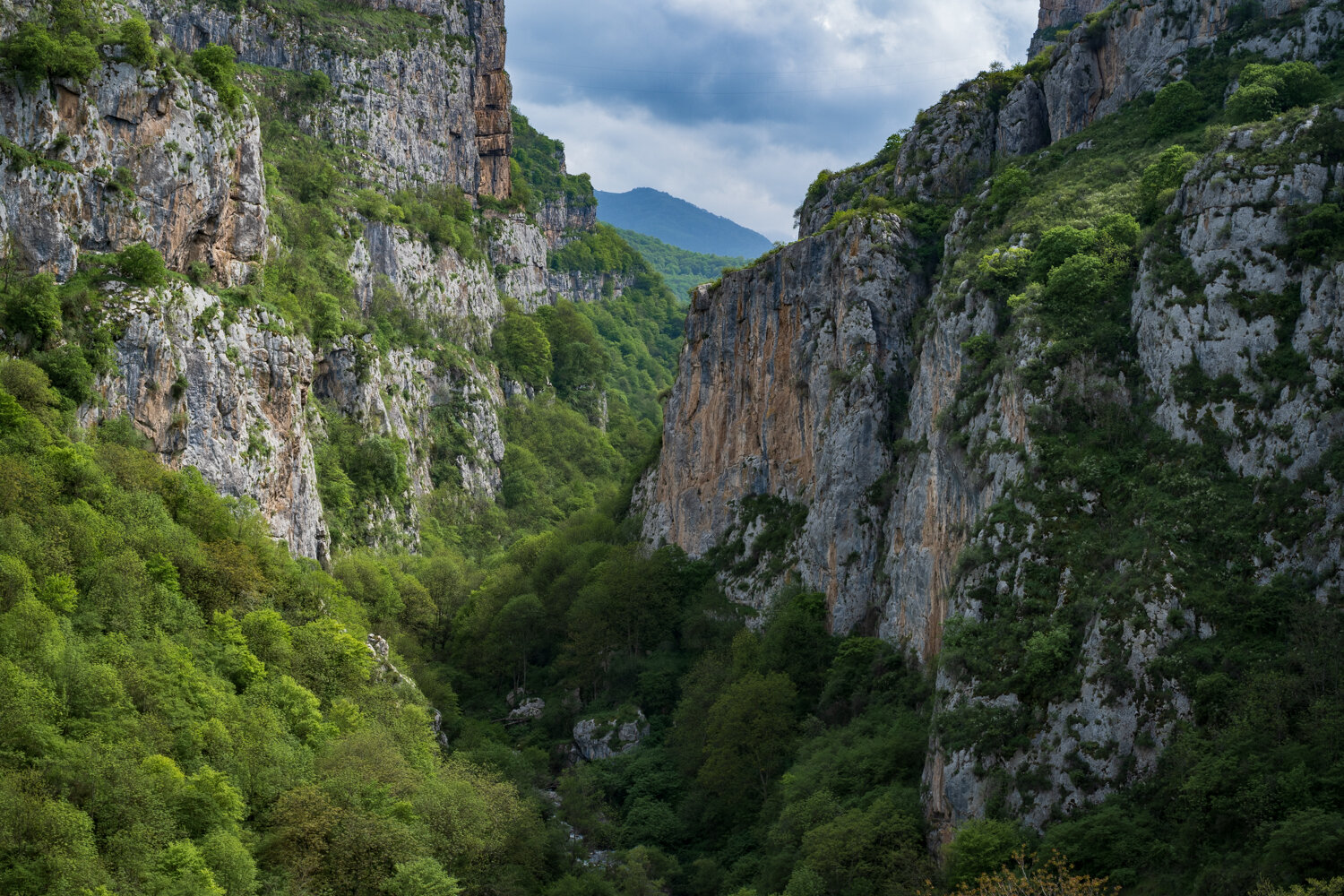
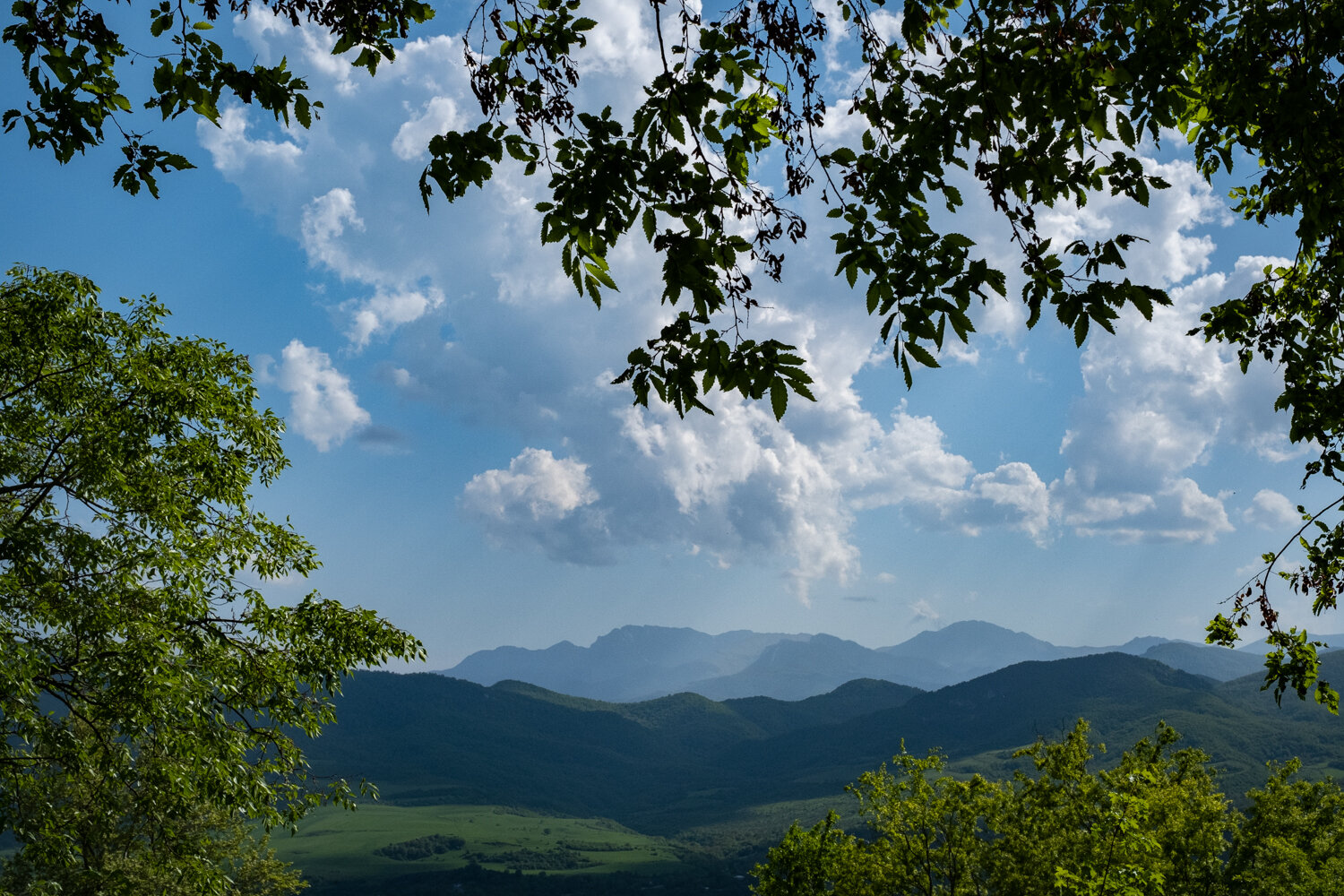
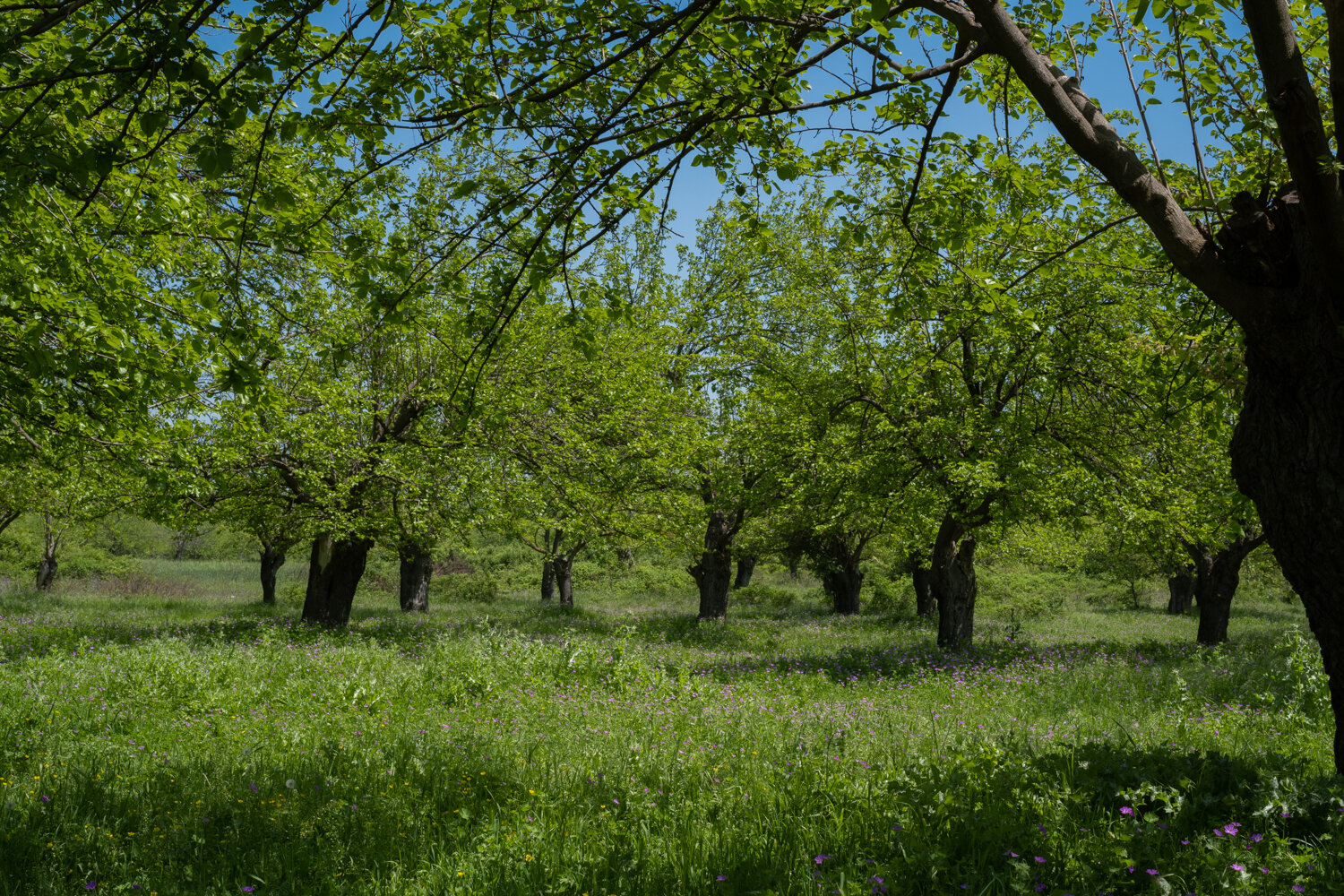
●
I didn’t end up in Nagorno-Karabakh by accident. No-one does. In fact, I very intentionally crossed the “border” from Armenia in a very white Lada jeep through occupied Azeri land into Nagorno-Karabakh proper, both controlled by Armenia at the time. The spooky north-western border crossing had an edge of the Earth feel, a whiff of impermanence about it that all disputed borders give off.
Just inside occupied Azeri territory after crossing the border from Armenia.
The date was May 7, 2019. Mist and low cloud hung down over the steep cliffs and deserted forest valleys I drove through on the way to Stepanakert, stopping to visit Davidank and Gandzasar monasteries, one inside and one outside Nagorno-Karabakh proper, both more than seven hundred years old, other-worldly in their secrets, their forests, their mountain hideaways.
As the day faded and the sun snatched its way through the clouds in beams of celestial gold, my Lada chugged in to rough ‘n’ tumble Stepanakert, pulling to a stop in a cloud of Lada-smoke at Hotel Heghnar, a concrete echo-chamber at the edge of town.
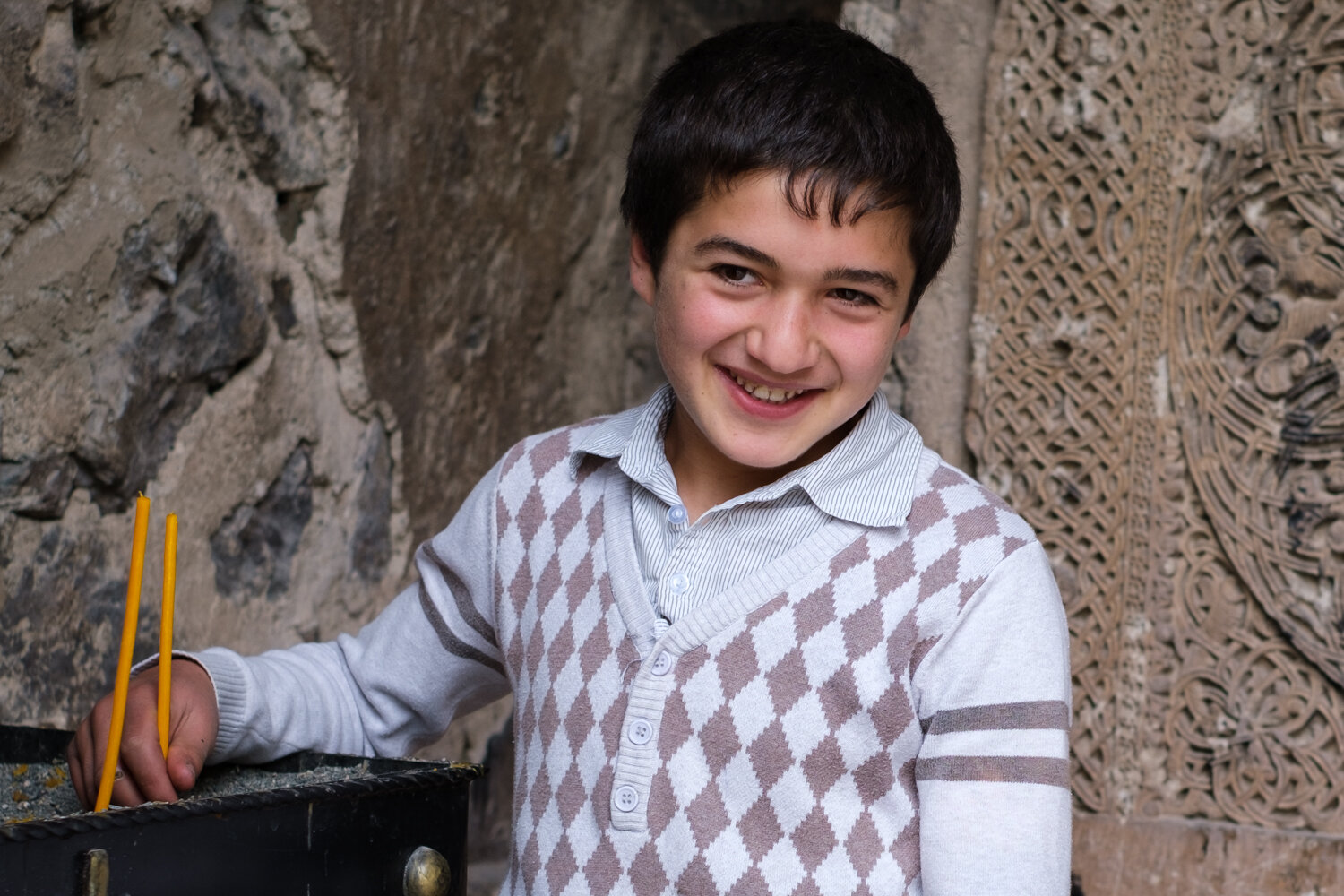
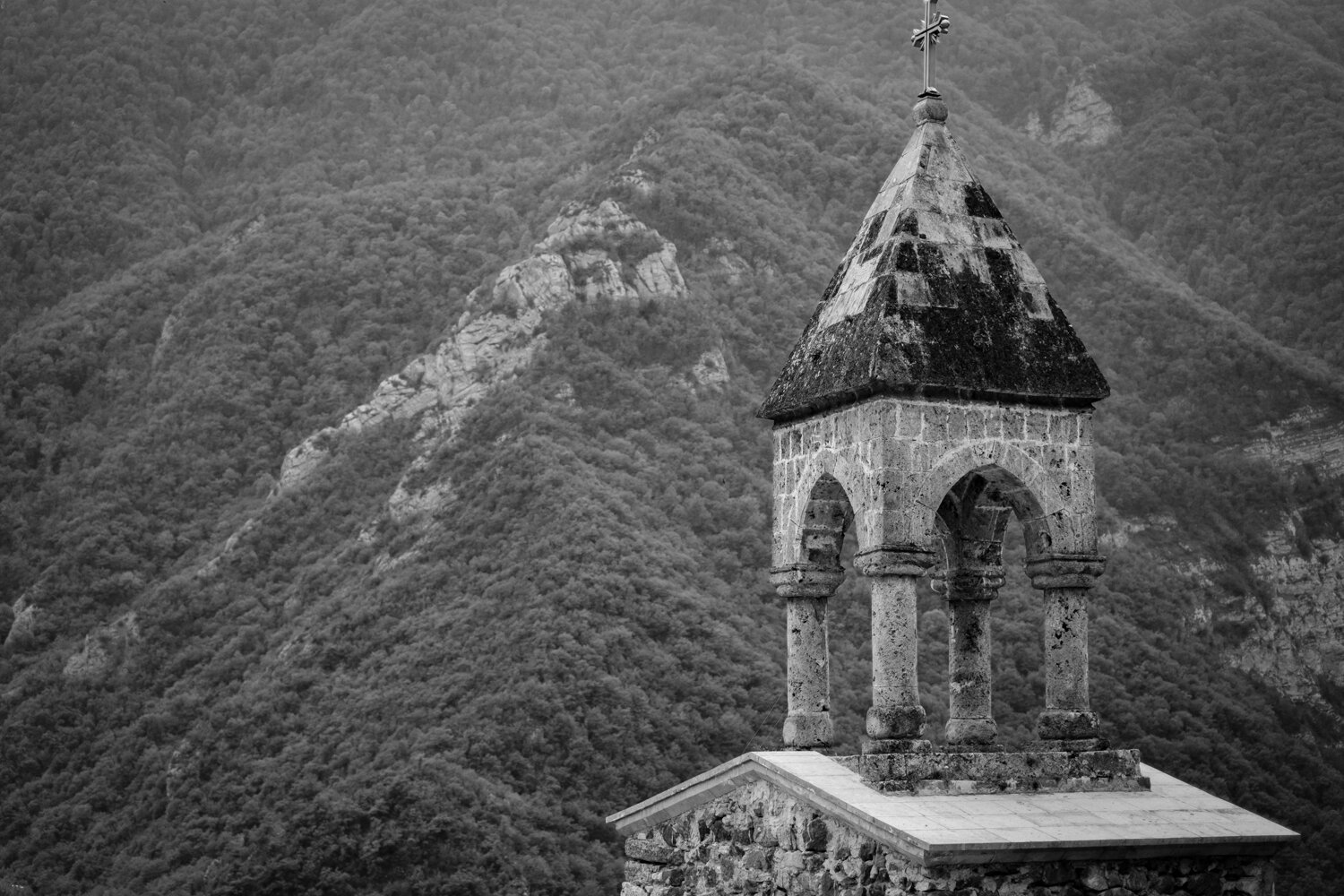
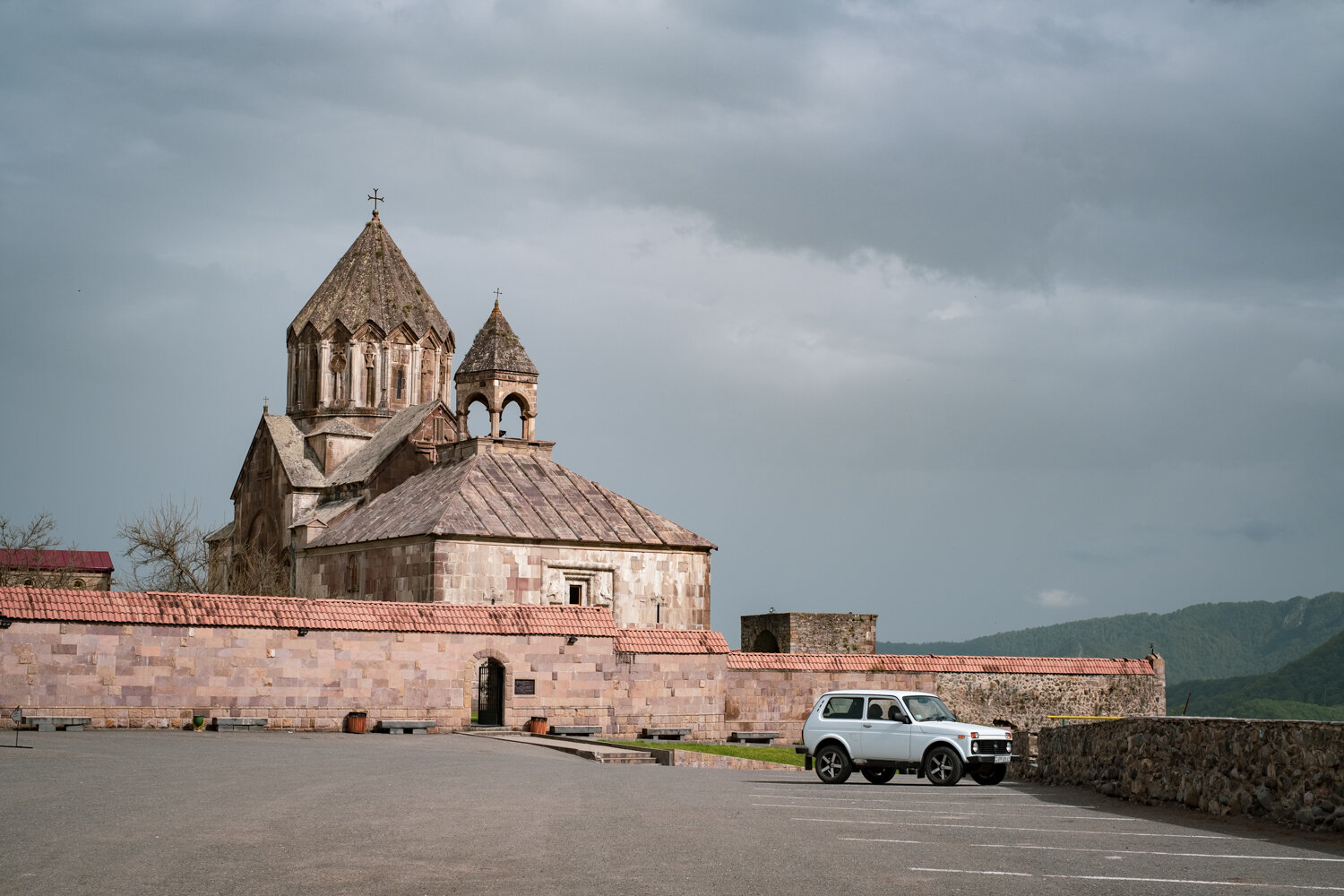

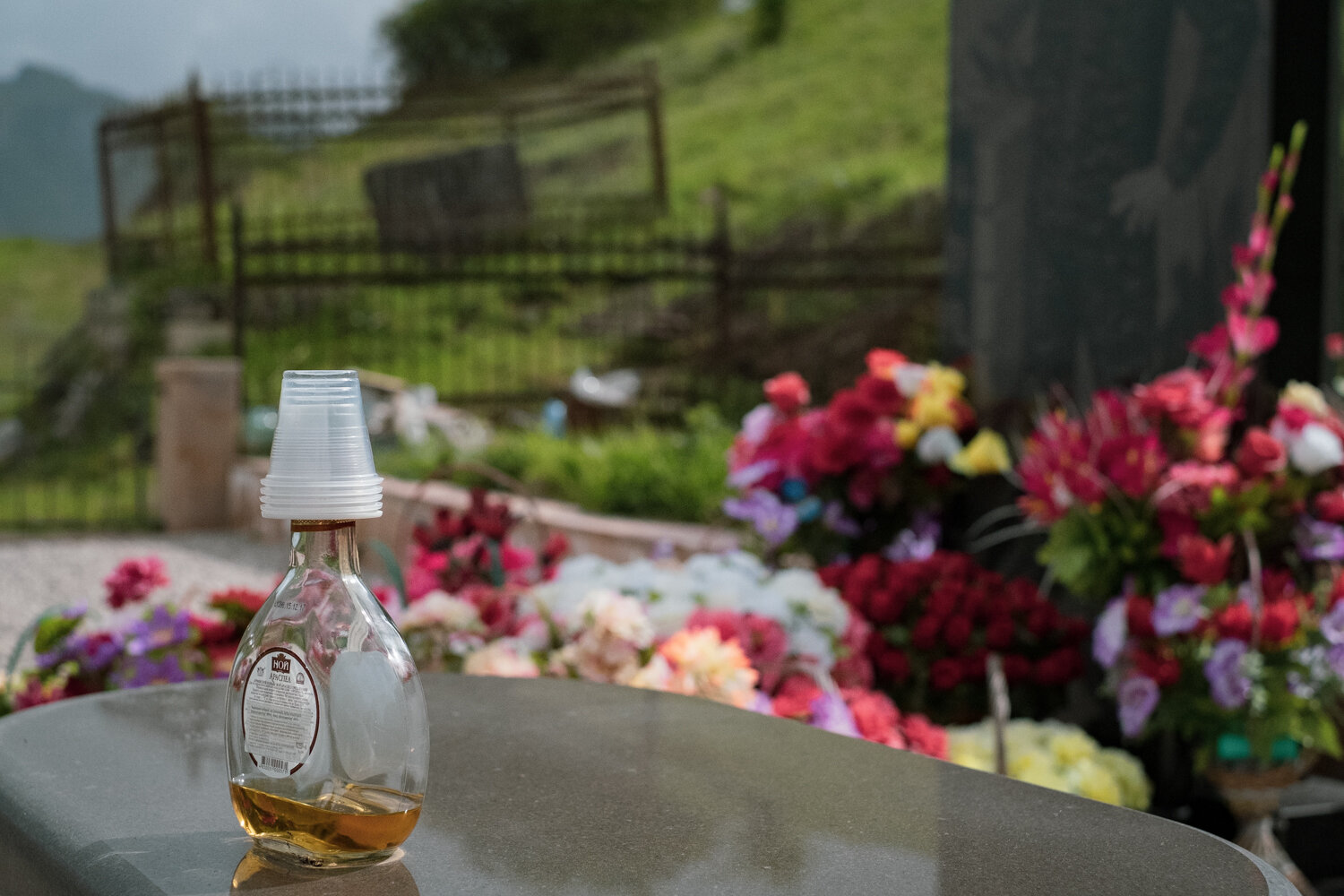
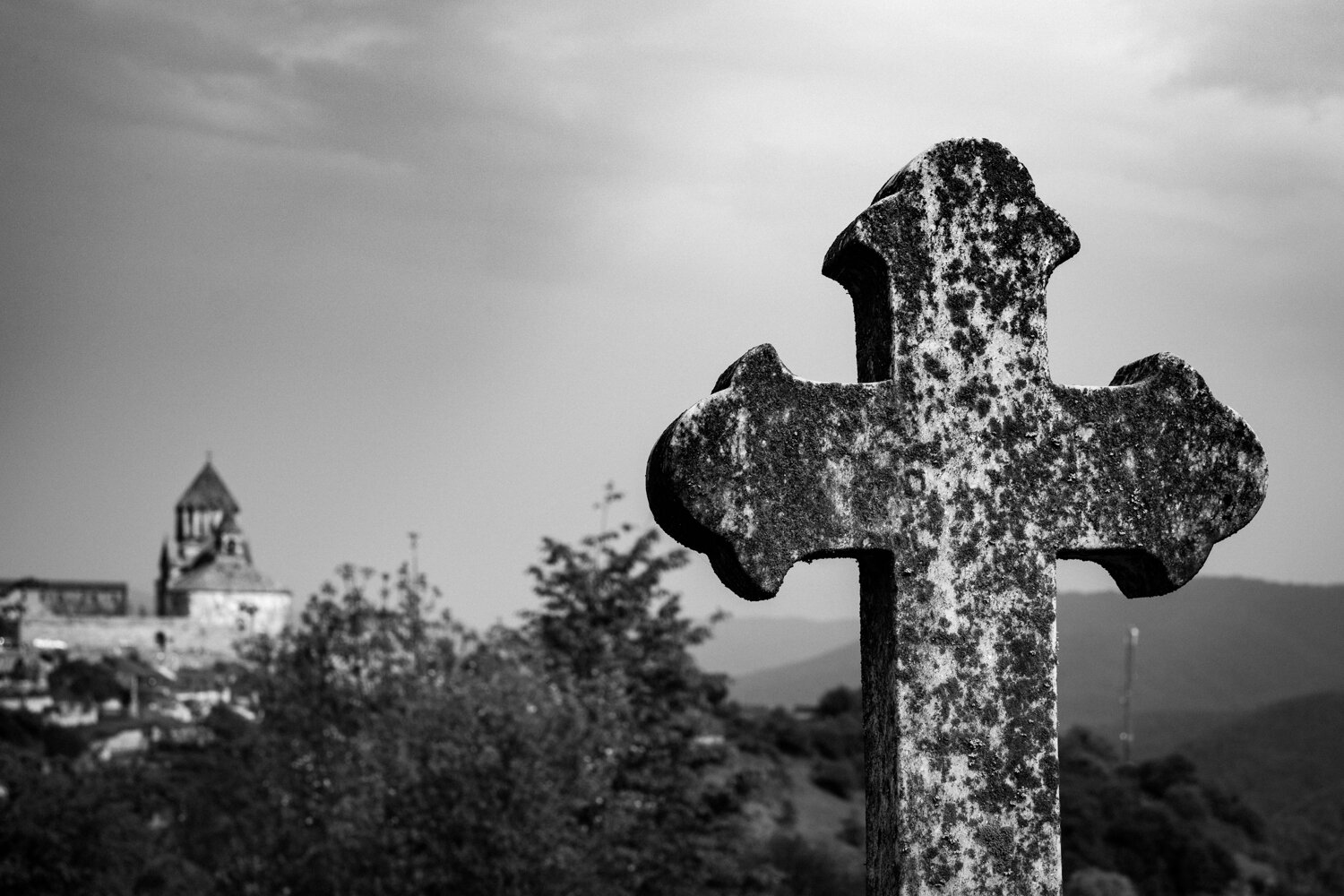
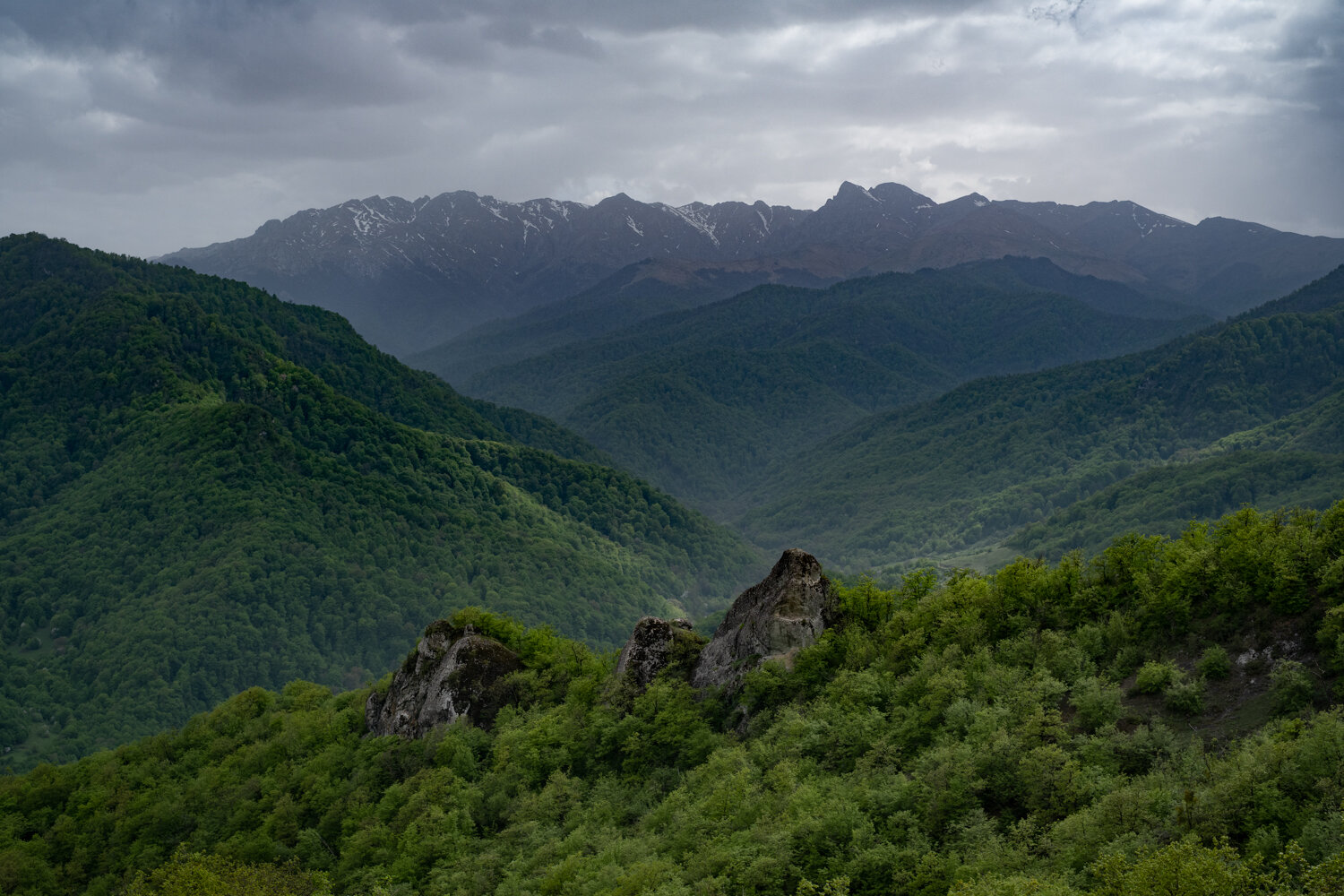
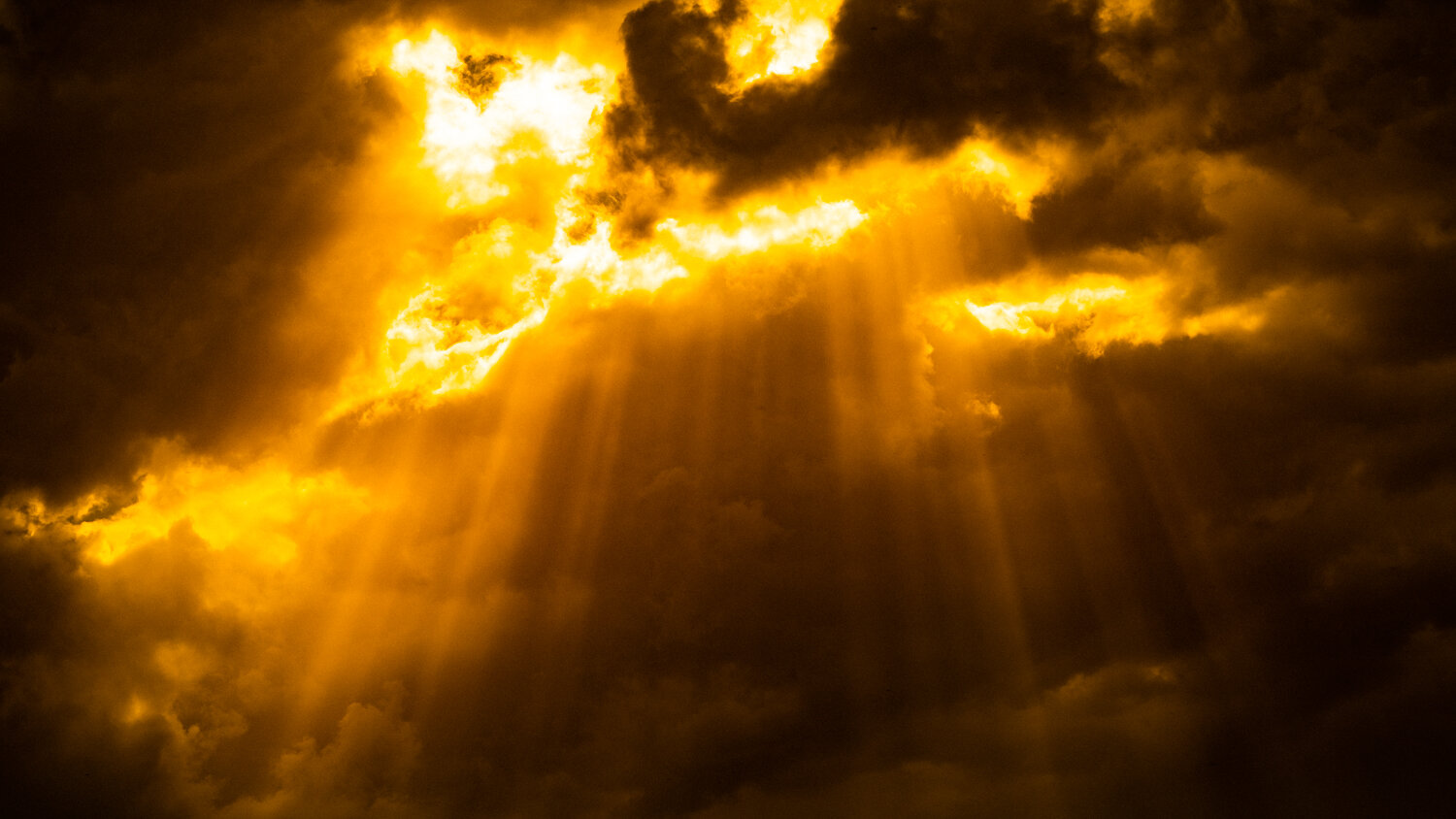
The following day the mist had melted away, and I drove south-east through rough villages and planted fields—the wooded hills and valleys never far off—to the two thousand-year old plane tree near Skhtorashen and, further up the road, Amaras Monastery. Apart from its caretaker, not a soul in sight, just a quiet church circled by monastic cells and a high stone wall; beyond, a sunlit orchard shimmered green and blue in the midday sun. That was about as far as you could go in a south-easterly direction if you weren’t a soldier or local; no man’s land was only a dozen miles further on. That afternoon in Stepanakert I saw young soldiers practicing their marching on the main square for the following day’s parade.
They weren’t very good at it.
●
Exactly twenty-seven years earlier in the night of May 8, 1992, Armenian forces scaled the cliffs surrounding Shusha and in little more than a day drove out the Azeri soldiers there. It was their first big win in the 1992-94 Nagorno-Karabakh war.
To understand why that war kicked off—and indeed the latest war too—it helps to open up the layers of history like you would nested Russian dolls; pulling apart one leads you to the next. To begin: both Armenia and Azerbaijan were part of the Soviet Union until 1991, when it collapsed. Just like in Yugoslavia with the death of Tito, this opened up a box of nationalist worms all over the show. One explosive box involved Armenia, Azerbaijan, and an autonomous region inside Azerbaijan whose population was majority ethnic Armenian and had been for a millennium, perhaps two: Nagorno-Karabakh.
Map of the region. Note also the exclave of Azerbaijan tucked in between Armenia and Iran. The southernmost tip of Russia can be seen just above Azerbaijan.
Opening up the first Russian doll reveals the next one: how did a bunch of Armenians end up living inside Azerbaijan in the first place? To answer this, it helps to understand that the southern Caucasus region—today’s Georgia, Armenia and Azerbaijan—was once more a multi-ethnic mishmash than a collection of “countries”, until the Europeans and Russians got it into their heads from the 19th century on into the 20th that “nations” and nationalism were things and multi-ethnic lands [were for chumps]. World War I kicked off in 1914 and its aftermath in the Caucasus was messy to say the least. The Armenian Genocide is the most well-known regional event from the time, but far from the only one.
For example, after the war, in 1919, the British occupied Nagorno-Karabakh and named an Azeri as governor general, leaving it to the Paris Peace Conference to make a final decision on which country would keep it. That the British could even have a presence there in the first place was because in 1918-20, Azerbaijan, Armenia, and Georgia managed to briefly break free from Russian dominance and temporarily exist as fledgling nation states.
This British pass-the-buck was particularly unpalatable to the Armenians who made up the majority of Nagorno-Karabakh’s population, and they decided that this land was worth preemptively fighting over. During this period of ethnic skirmishes, an infamous event was the Shusha massacre of March 1920, a mass killing of around five hundred Armenians and the complete destruction of their part of the town. This took place after Armenian fighters tried—and failed—to disarm the Azeri garrison there.
Shusha’s Armenian quarter after the massacre of 500 Armenians in March 1920. [Wikipedia: claims photo is from US National Archives]
In April 1920, the next Russian doll appeared in the belly of the last: While the Armenian and Azeri armies were going at it over Nagorno-Karabakh, Russia—now run by Bolsheviks—invaded Azerbaijan and took it over again. By the end of 1921, Armenia and Georgia were also back under Mother Russia’s wing, and all three countries would remain so for seventy more years, right up to the implosion of the USSR in 1991. When the Russians were back in control, however, they didn’t have the faintest idea how to calm things down in Nagorno-Karabakh either. They decided to set up—to deal with this and other “national” issues in other “countries” under their control—a seven-member committee. This committee was presided over by a man named Joseph Stalin.
On July 4, 1921, the committee voted 4-3 to give Nagorno-Karabakh to Armenia.
The following day, it reversed its decision and left it as part of Azerbaijan—though with considerable autonomy for the mostly Armenian population. This reversal, which would have big consequences seventy years later, aligned with the Soviet strategy at the time of keeping different “national” groups peeved at each other rather than at their Soviet overlords.
You could argue of course that if the original decision had held, Azerbaijan would simply have tried to take Nagorno-Karabakh back in the 1990s rather than the reverse happening; this slice of real estate has plenty of Azeri History too. For instance, to Azeris, Shusha is indelibly associated with a rich cultural history from the 18th century onwards. Of Shusha at the turn of the 20th century, author Wendell Steavenson writes in her journalistic memoir, Stories I stole, “Shusha was a special place. It was a Karabakh town, half Armenian and half Azeri… full of newspapers and cafés; I saw postcards of it; there were mosques and churches almost side by side and a large covered market. It was a place for idle intellectual chit-chat; some said it was the second town in the Caucasus after Tiflis [Tbilisi, Georgia]. In the summer the fancy families from Baku [capital of Azerbaijan], Armenian and Azeri and Georgian alike, came to Shusha to escape the heat and relax.”
In turn, Steavenson considers the novel, Ali and Nino by Lev Nussimbaum (Kurban Said his pseudonym) to be the go-to fictional yet deeply true account of the Caucasus and its people in the early 20th century. In the eyes of the novel’s main protagonist Ali, a Muslim Azeri, we learn that, “Shusha is a strange town. It stands five thousand metres [feet] high up in the mountains, surrounded by woods and rivers. Armenians and Mohammedans live there together in peace.” A little further on, he continues, “It was now five days since I had arrived in Shusha, waiting for Nino [a Christian Georgian girl he’s in love with], and listening to everyone I met telling me all day long that all rich, brave, or in any way outstanding people in the world came from Shusha. I had looked at the civic gardens and counted church steeples and minarets. Obviously Shusha was a very religious town: seventeen churches and ten mosques were more than enough for sixty thousand inhabitants…”
When it comes to Shusha, whose importance to Azerbaijan can be seen in the fact that its recapture by Azeri troops was sufficient for it to accept the war-ending Russian-mediated ceasefire [last month], this before it recaptured all of Nagorno-Karabakh—which it would have if it had decided to, it’s hard to keep the parallels with Sarajevo entirely out of your mind: its churches, mosques and synagogues; its cafes, writers and imagineers; its ethnic groups; indeed its bullet marks, still visible today more than twenty years after the latest war there. Bad things happen when religion, ethnicity, borders, history, and geopolitics collide.
●
May 9 in Armenian Nagorno-Karabakh is—though more likely was—celebrated for two reasons: Victory Day over Nazi Germany—a tradition in post-Soviet lands, and the storming and taking of mountaintop Shusha from the Azeris on this day in 1992.
Morning. I stood outside my hotel room sipping Armenian Nescafé, looking blurry-eyed past the ruin of a swimming pool, past the ugly apartment blocks of Stepanakert, their mottled post-Soviet concrete a Pantone paint palette for the colour grey and their wonky balconies holding on for dear life, to the hazy green mountains beyond. It was a good day to be alive. The nightmares of 2020—both the virus and the new war—were as unimaginable then as the swimming pool spontaneously filling with water as an act of God.
After a mere two days in town, I already had a sense of the pervading sentiment rising from this land and its people: impermanence. A semi-charmed kind of existence lived on pretty shaky ground. This feeling of impermanence was spiked with half a cup of sadness. The sadness was very post-Soviet, but the impermanence was fresh to me; there was a hint of it in every unfinished building, every sideways glance. It was easy to feel like an imposter in a place like Stepanakert, you simply had to walk down the street. Only crazy non-Armenians ever showed up in this far-flung borderland, people with something missing in their own lives.
In the streets of Stepanakert, most of the locals glanced at me and my shiny black camera as if I were a moderately interesting alien newly landed from outer space (perhaps in a futuristic Lada). Some engaged in semi-subtle stares, with quick flickaways of the eyes when our glances crossed. Others were entirely apathetic to the rare event of spotting a foreigner in their midst, not particularly bothered by the photos I took of them; time capsule photos, it turns out. Only one thing was clear: I must have looked nothing like an Azeri spy.
The swimming pool at Hotel Heghnar, Stepanakert.
The big event on the 9th of May was the military parade through the baking streets of Stepanakert—a climate change gift from the gods. As soldiers and brass bands strutted in approximate formation, a subdued atmosphere reigned with little cheering or joy, like the grim weight of war simply had to be brought to the surface once a year whether you liked it or not. Sweating in the crowd, I had the unsavoury thought that it would be just the time for Azerbaijan to kick off an invasion or send in a couple of missiles.
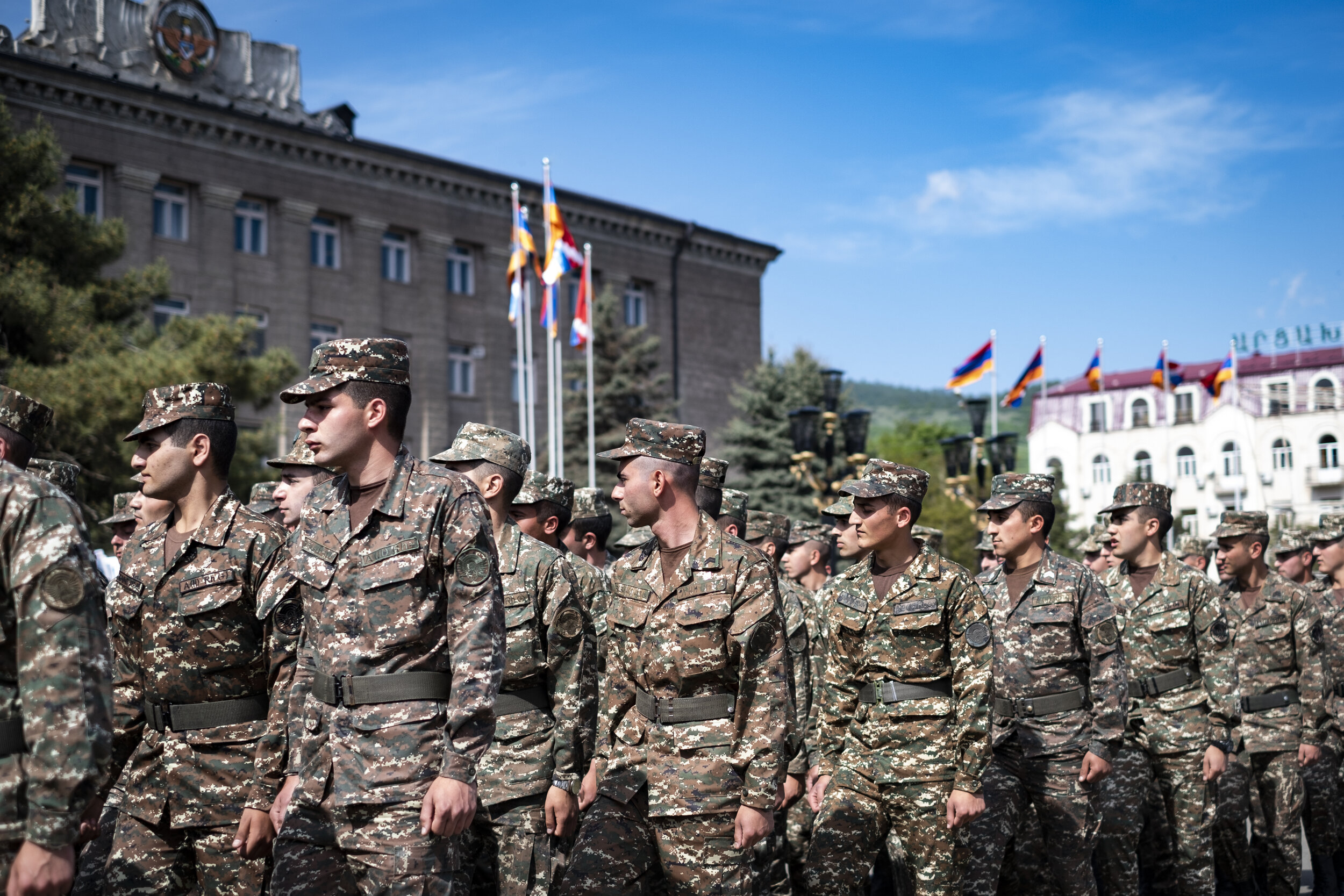
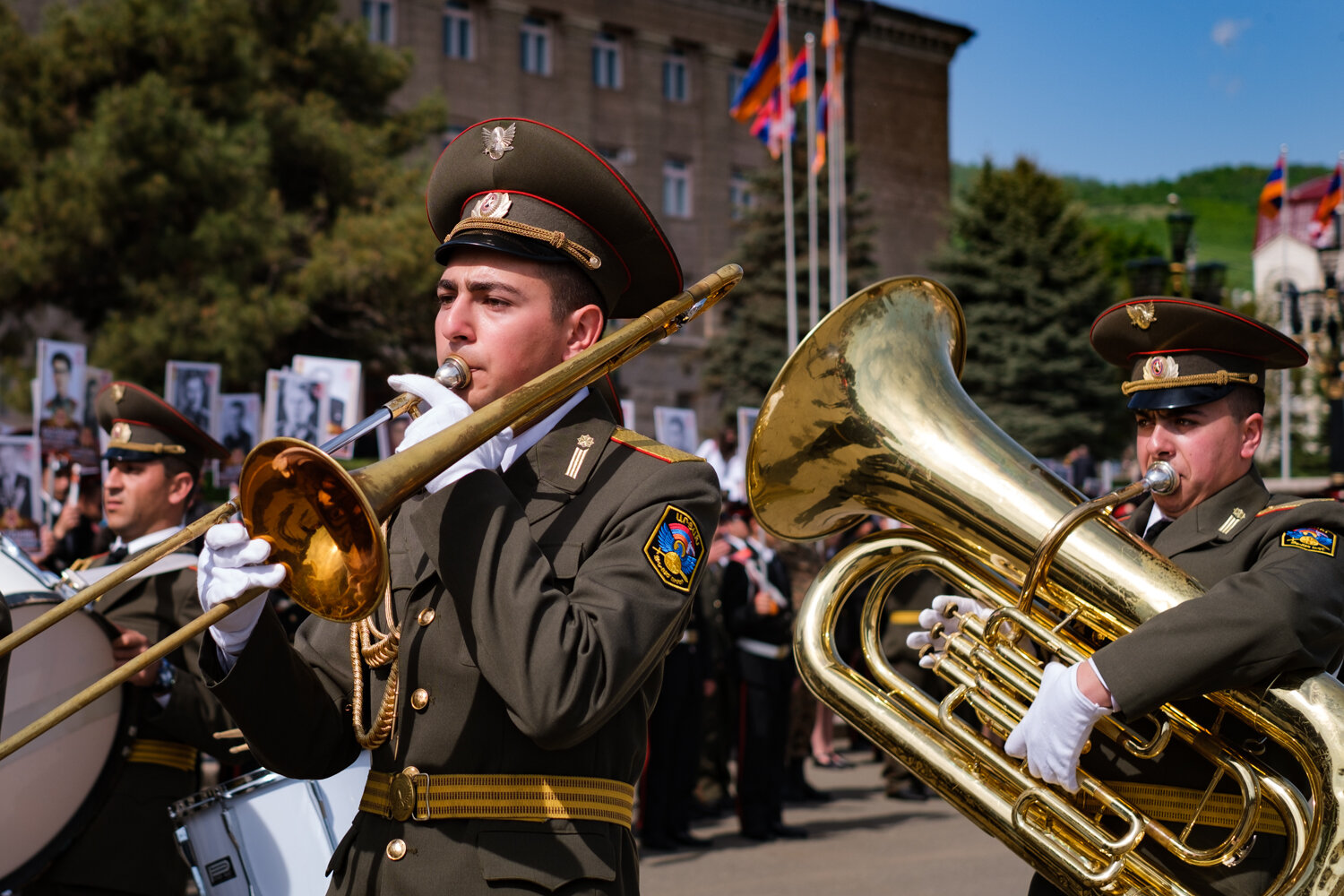
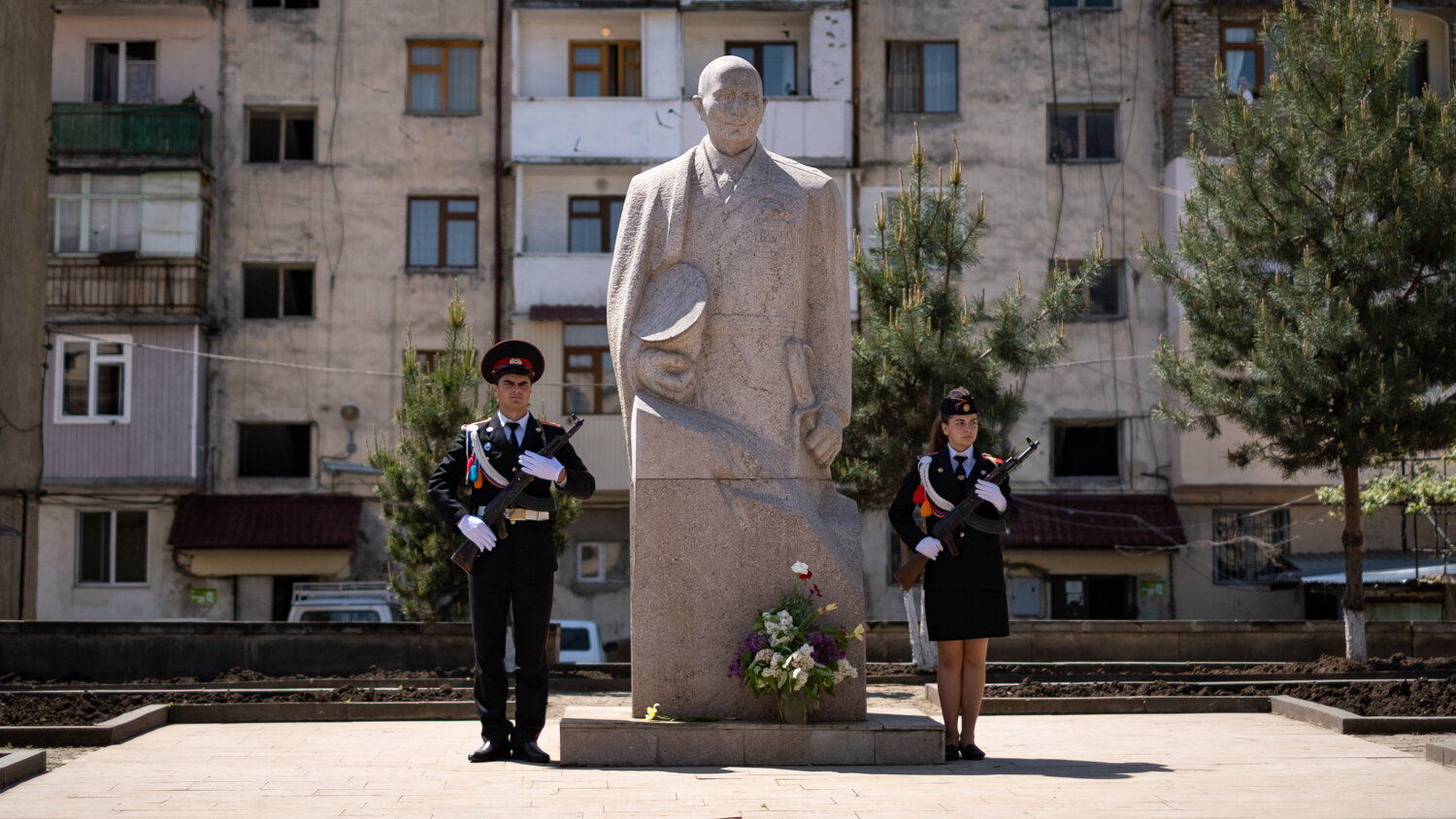
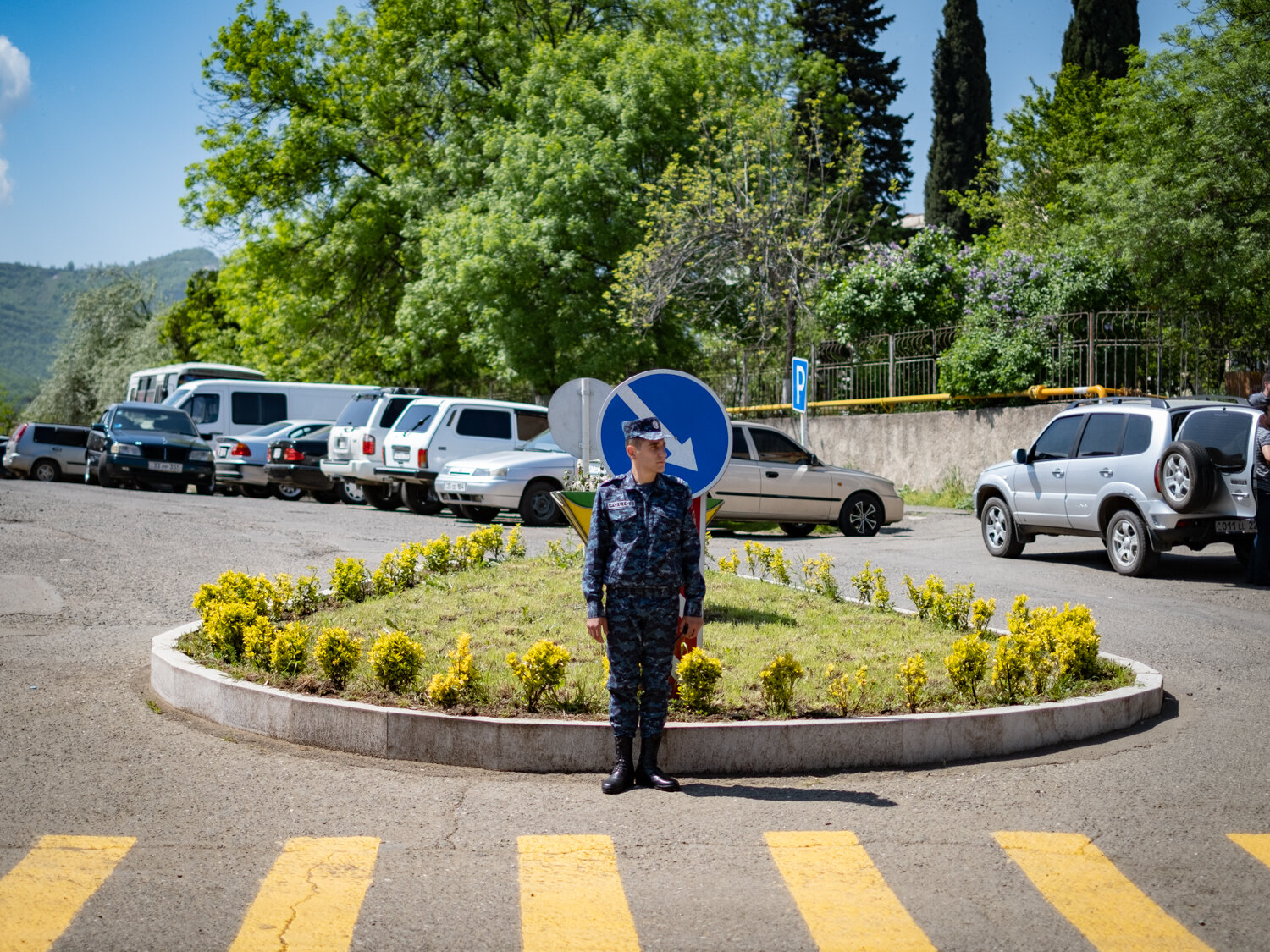
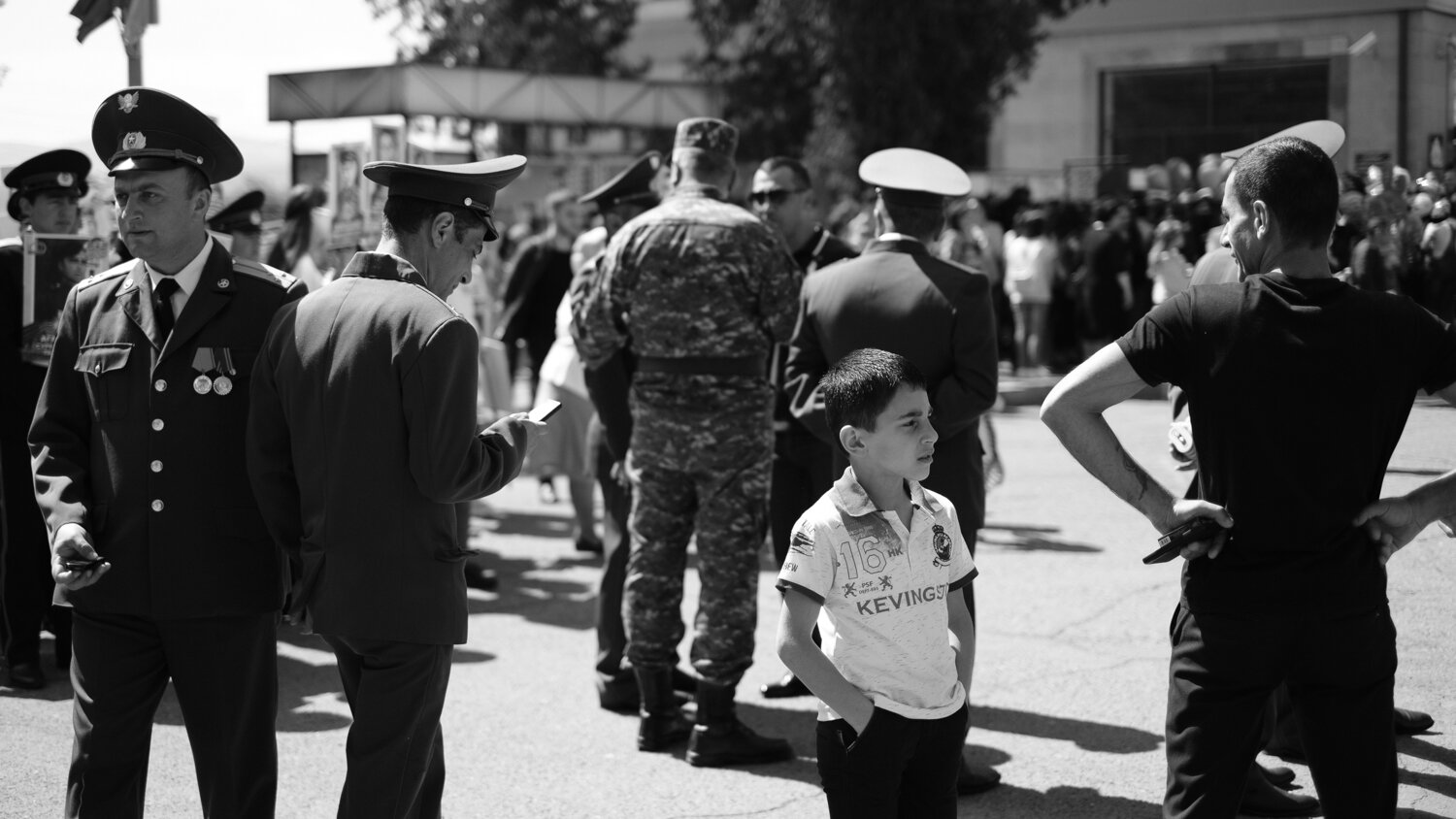


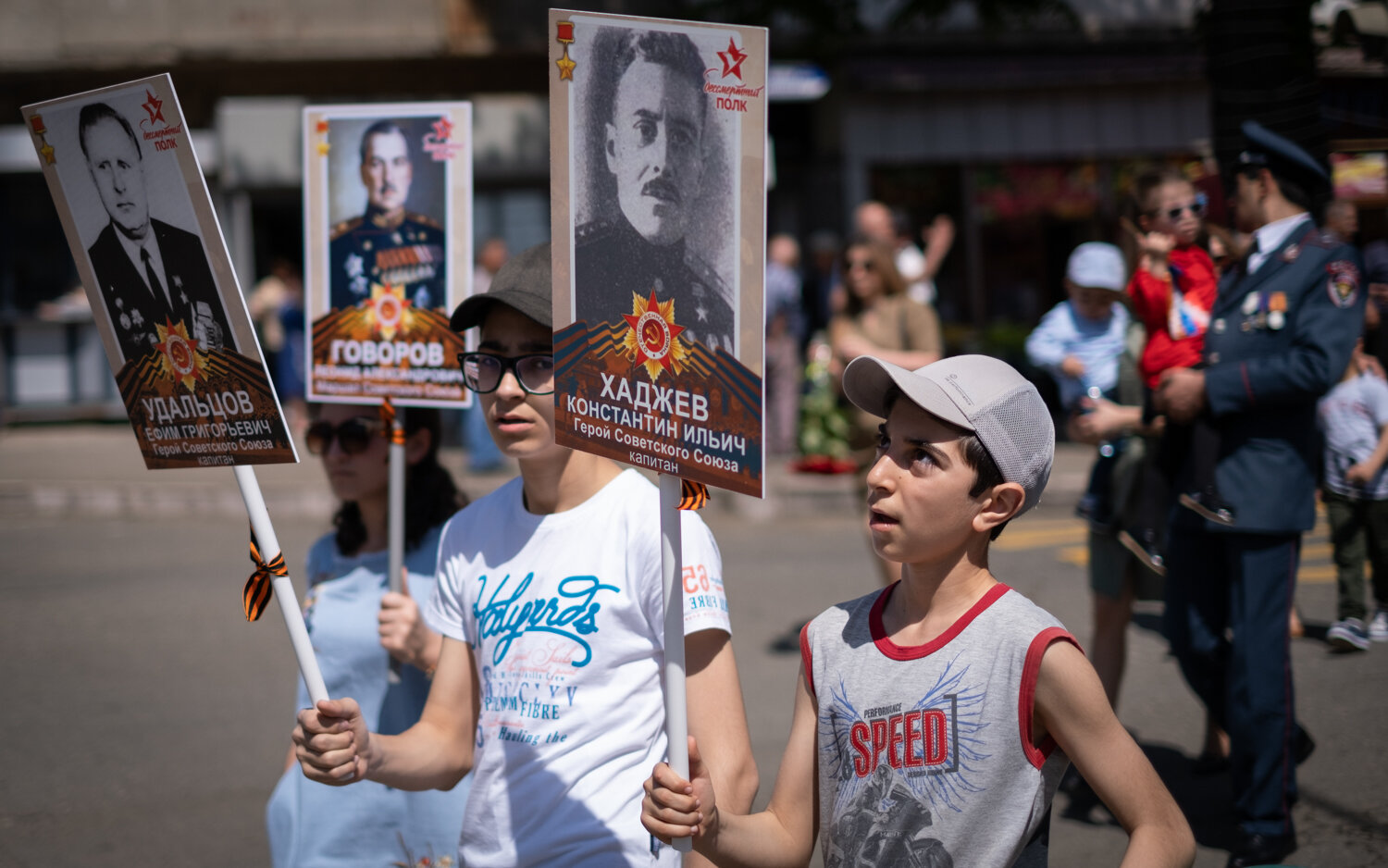
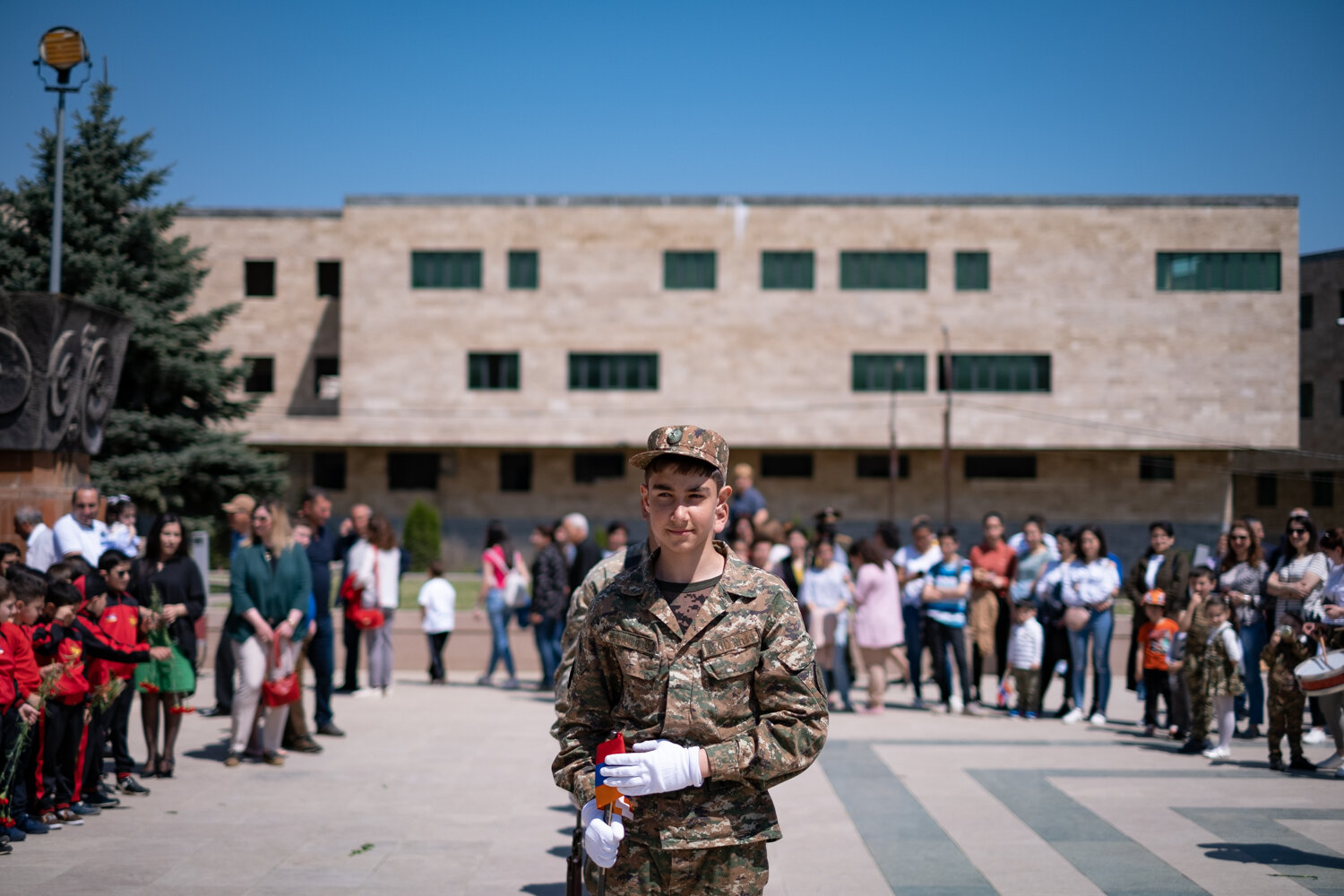
As the tail end passed, the crowd tagged on the back and walked through to a ceremony at the Victory Monument on the edge of town; more grim, sober milling about, more sad saluting, dark red roses of remembrance laid gently. I took a blurry photo of Armenia’s current prime minister, Nikol Pashinyan, surrounded by bodyguards as he walked through the crowd, waving and smiling. (Today he is smiling a little less and fighting for his life, both politically and even literally, after losing the war.) Children in a military-style youth group showed off their synchronised gun-twirling skills in dainty white gloves, surrounded by friends and family. The sun screamed down on this borderland scene like hell from on high, and soon the meandering Armenians slipped away in twos and threes until only red roses remained.

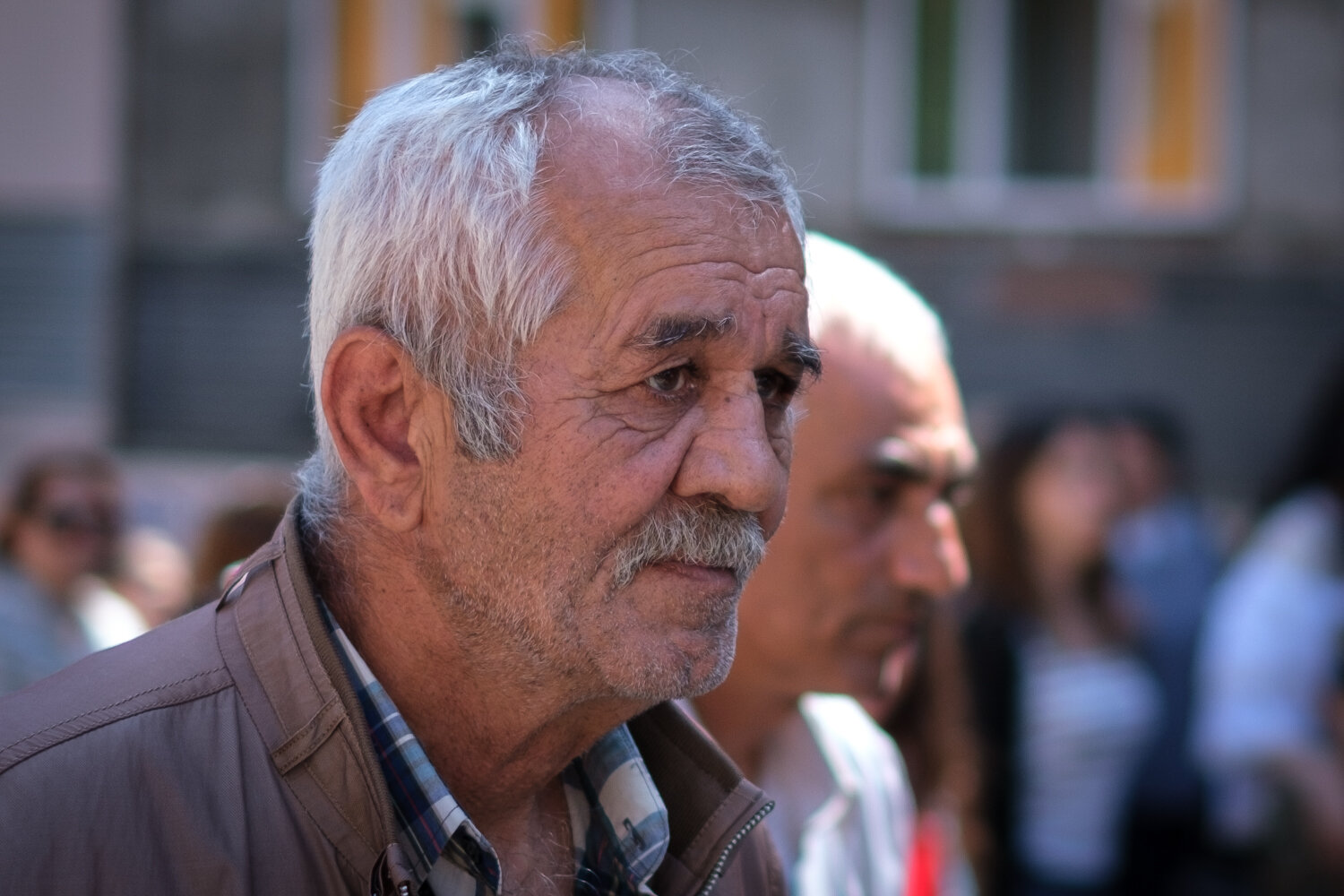
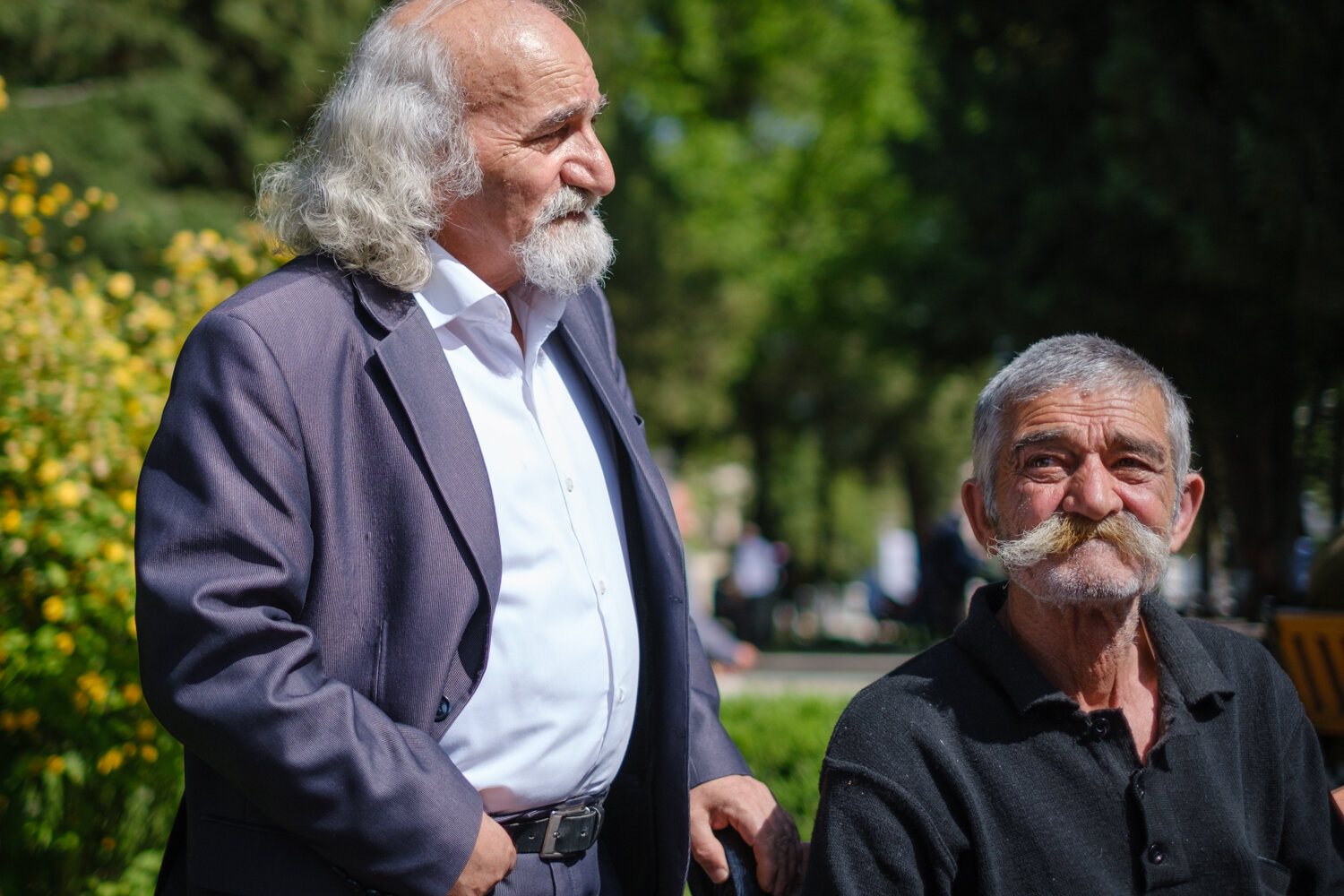
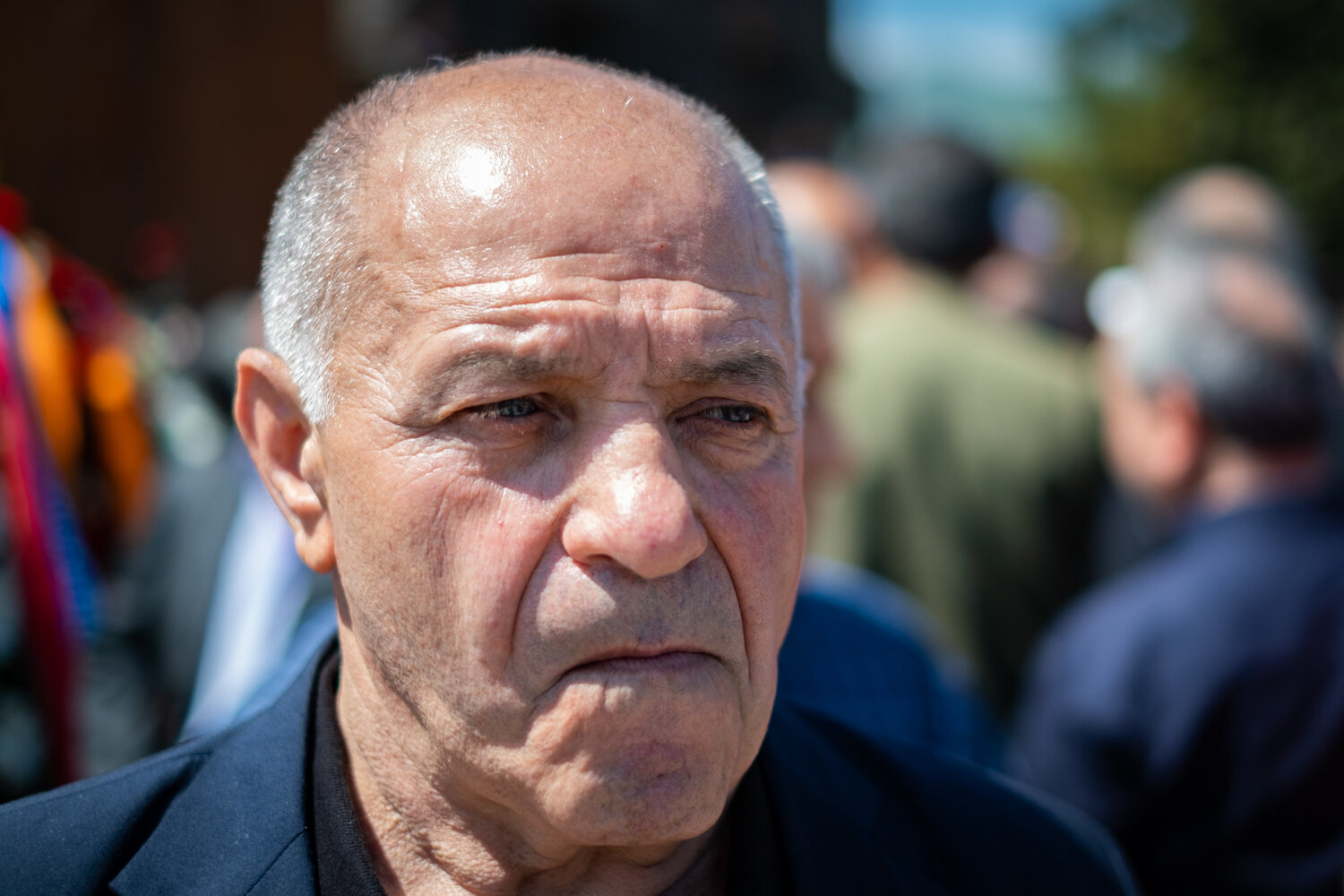

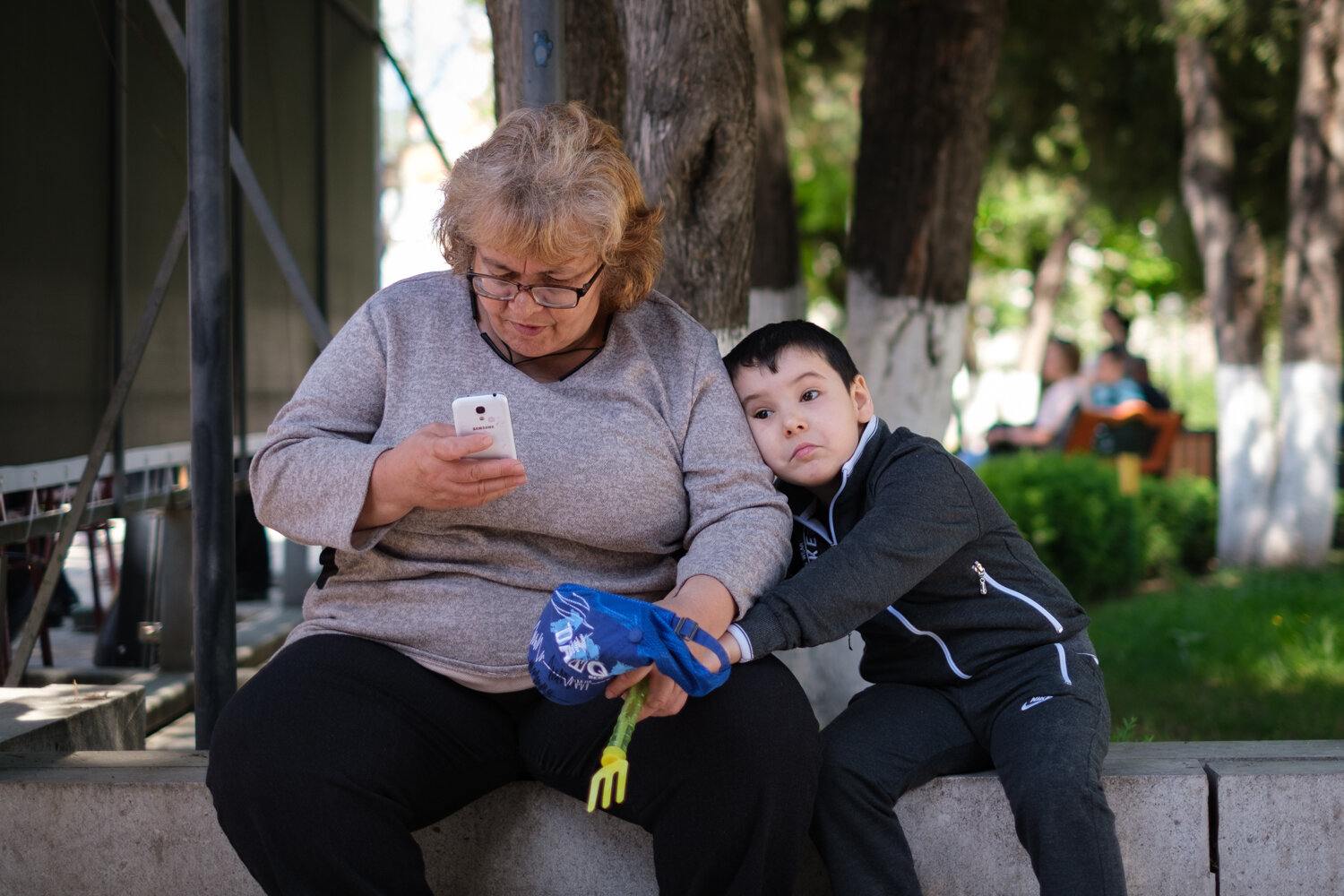
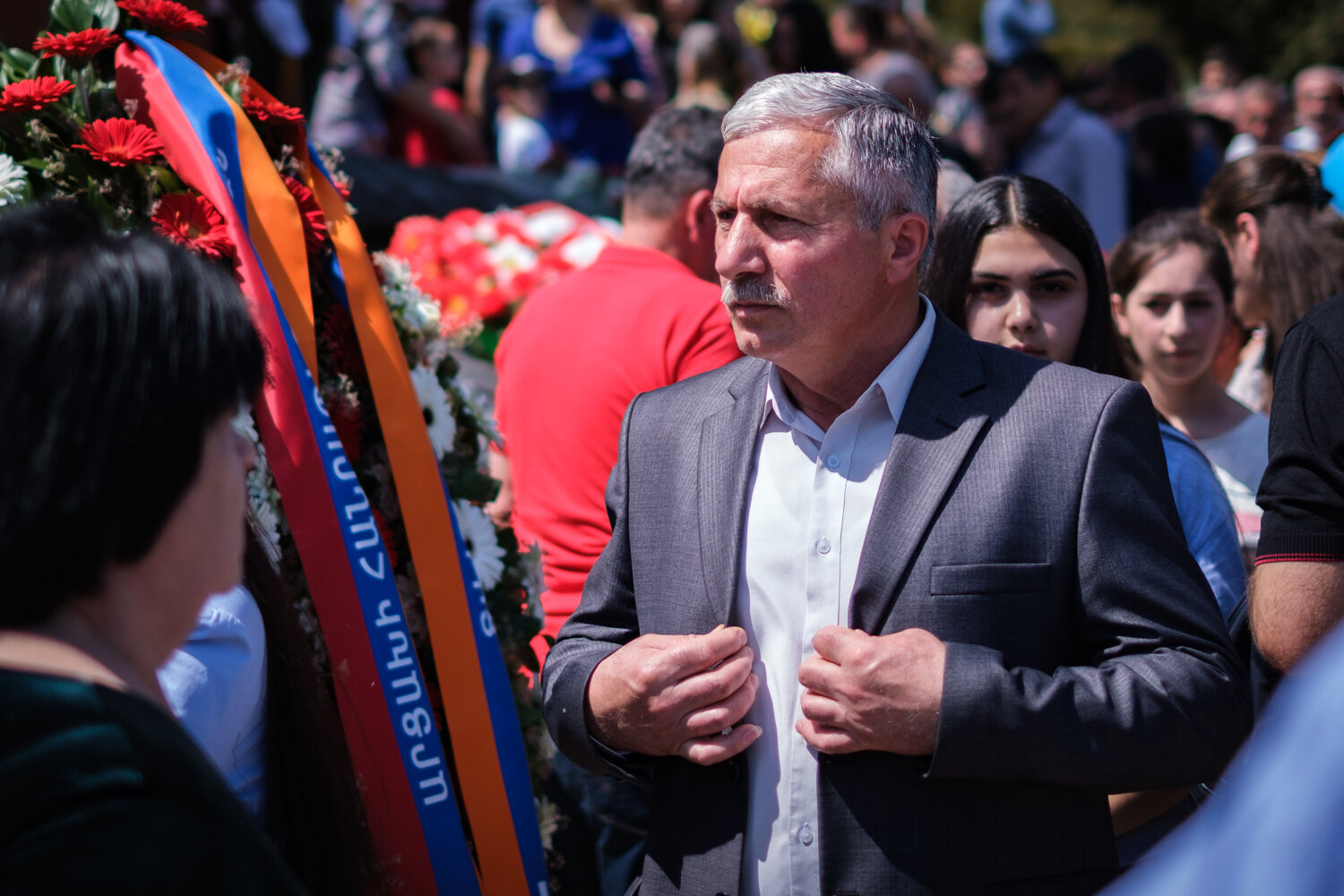
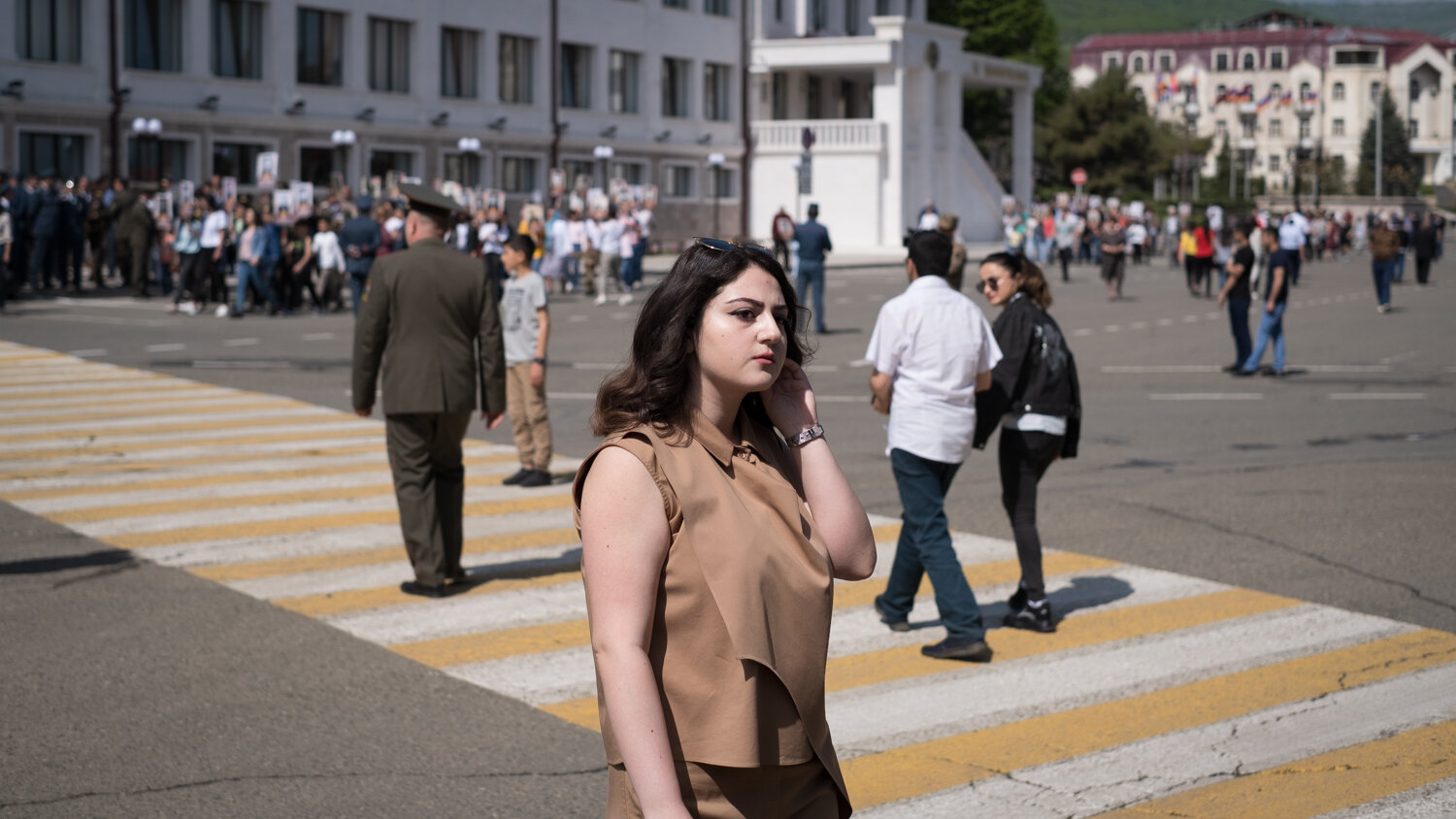
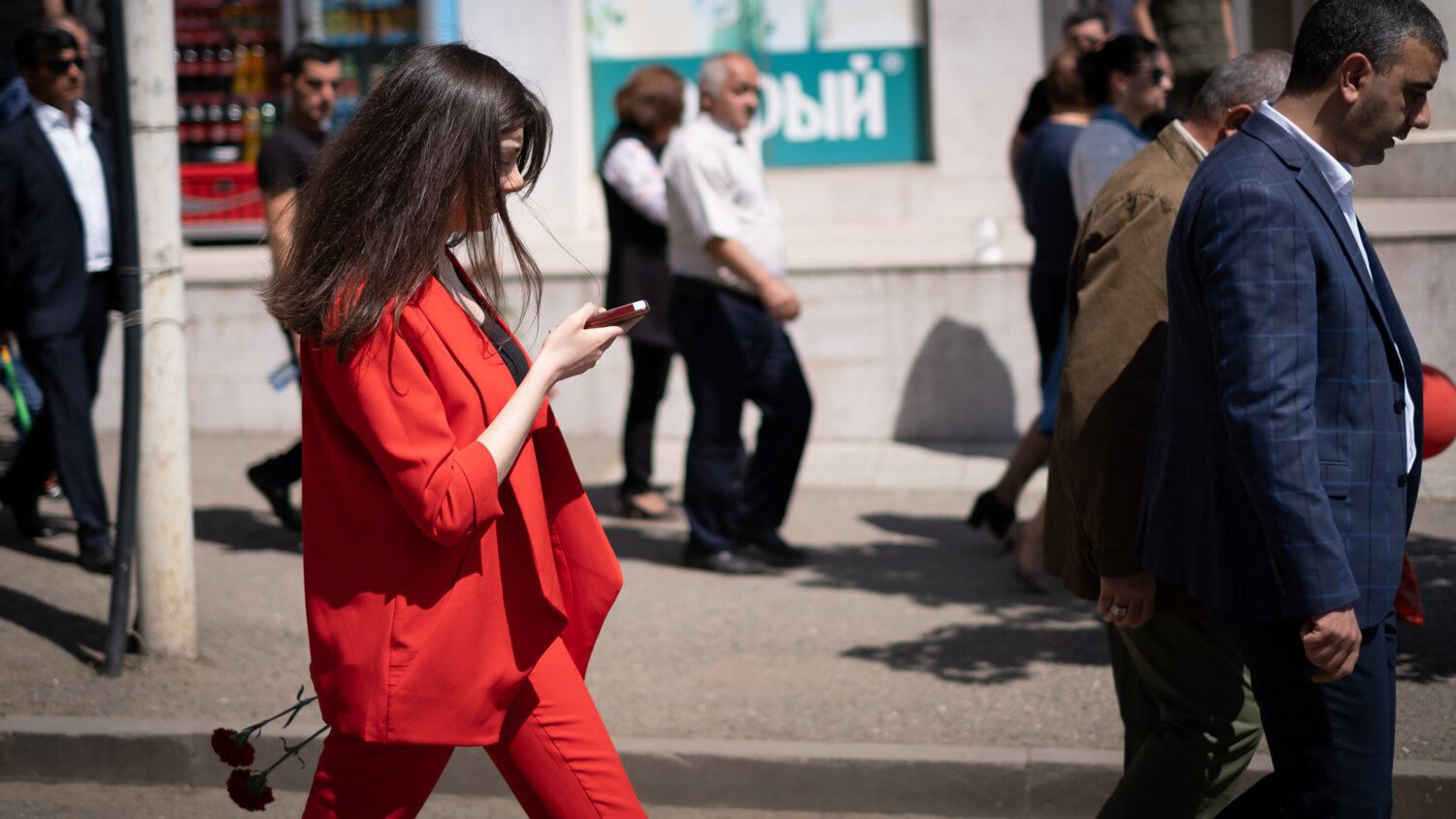
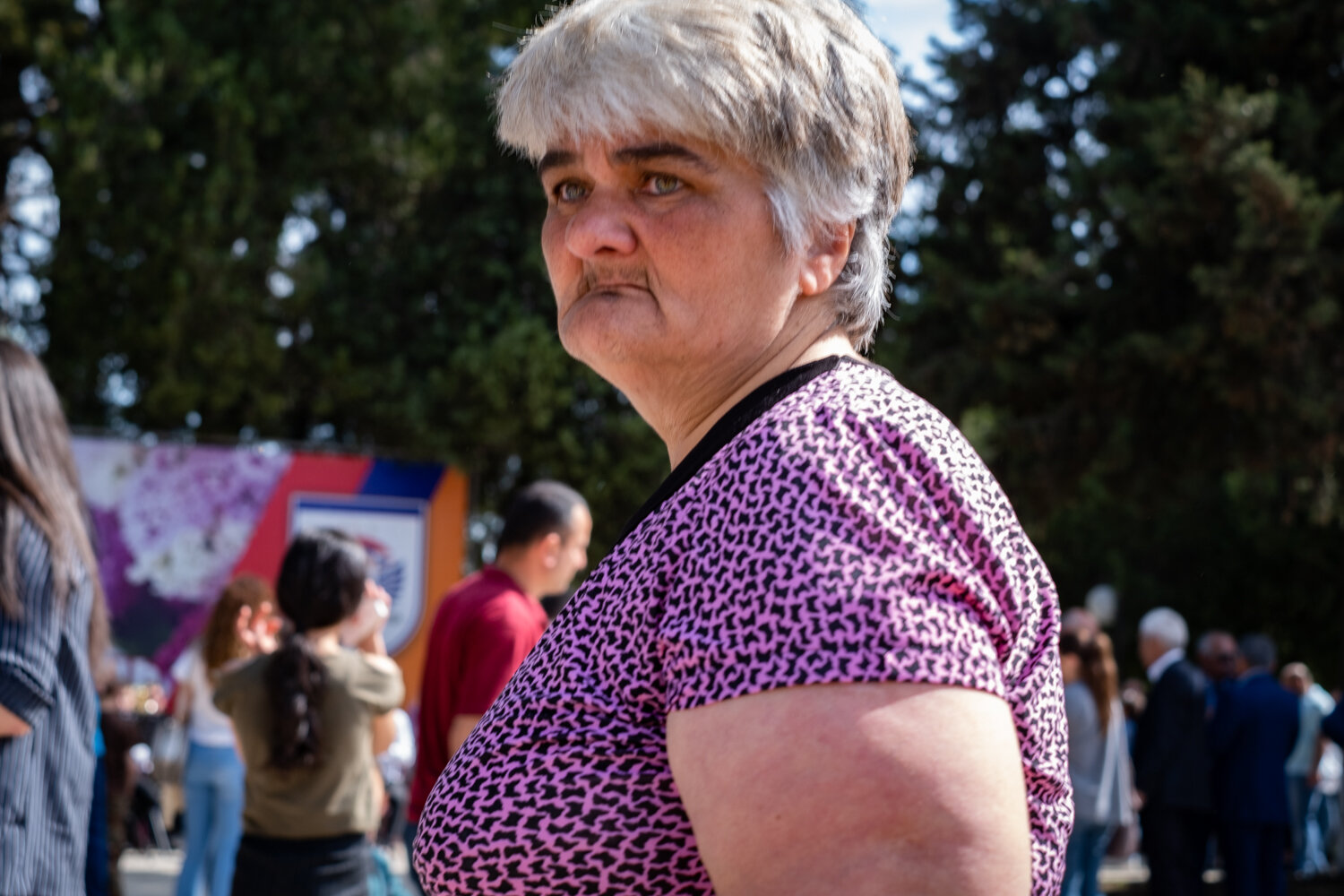
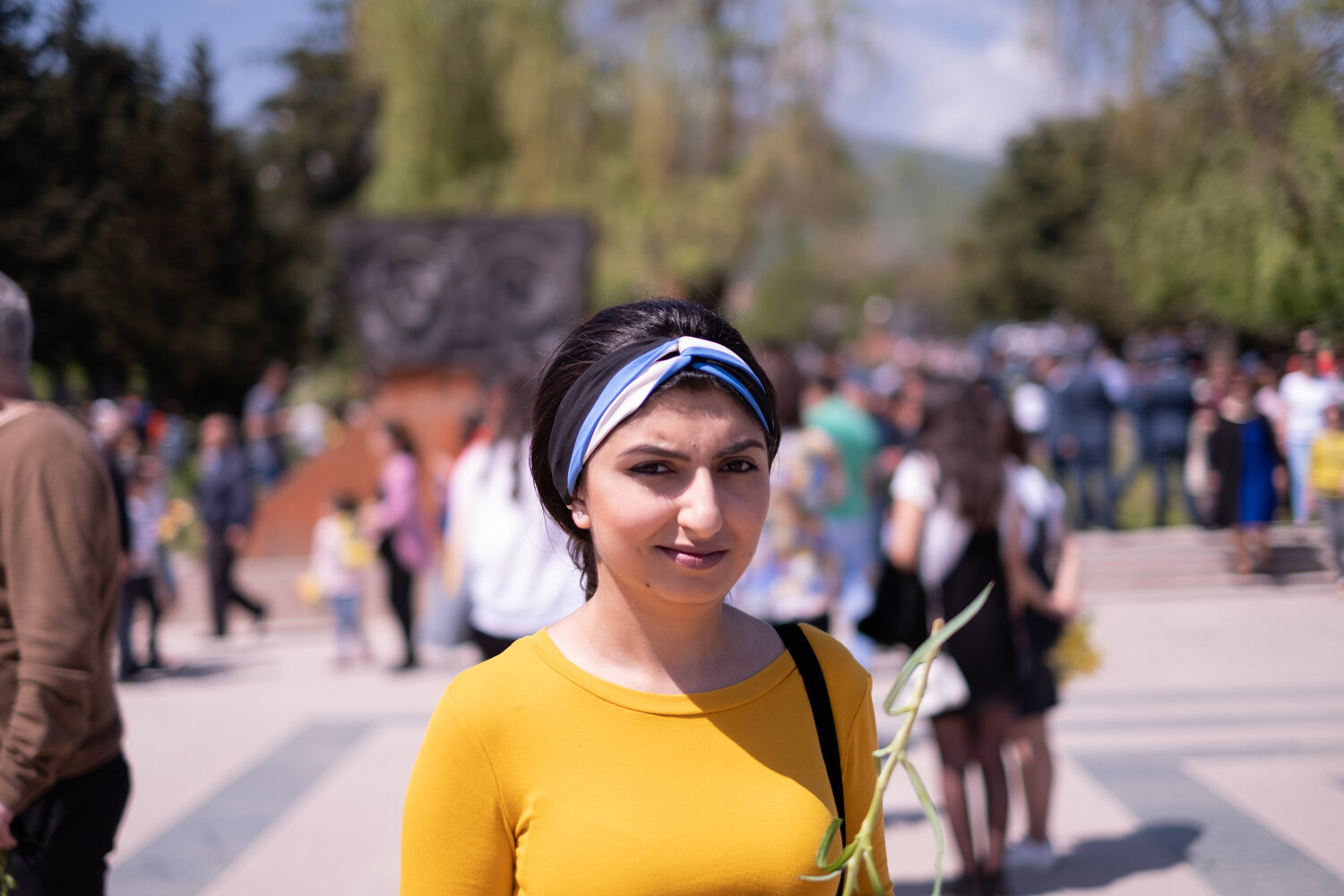
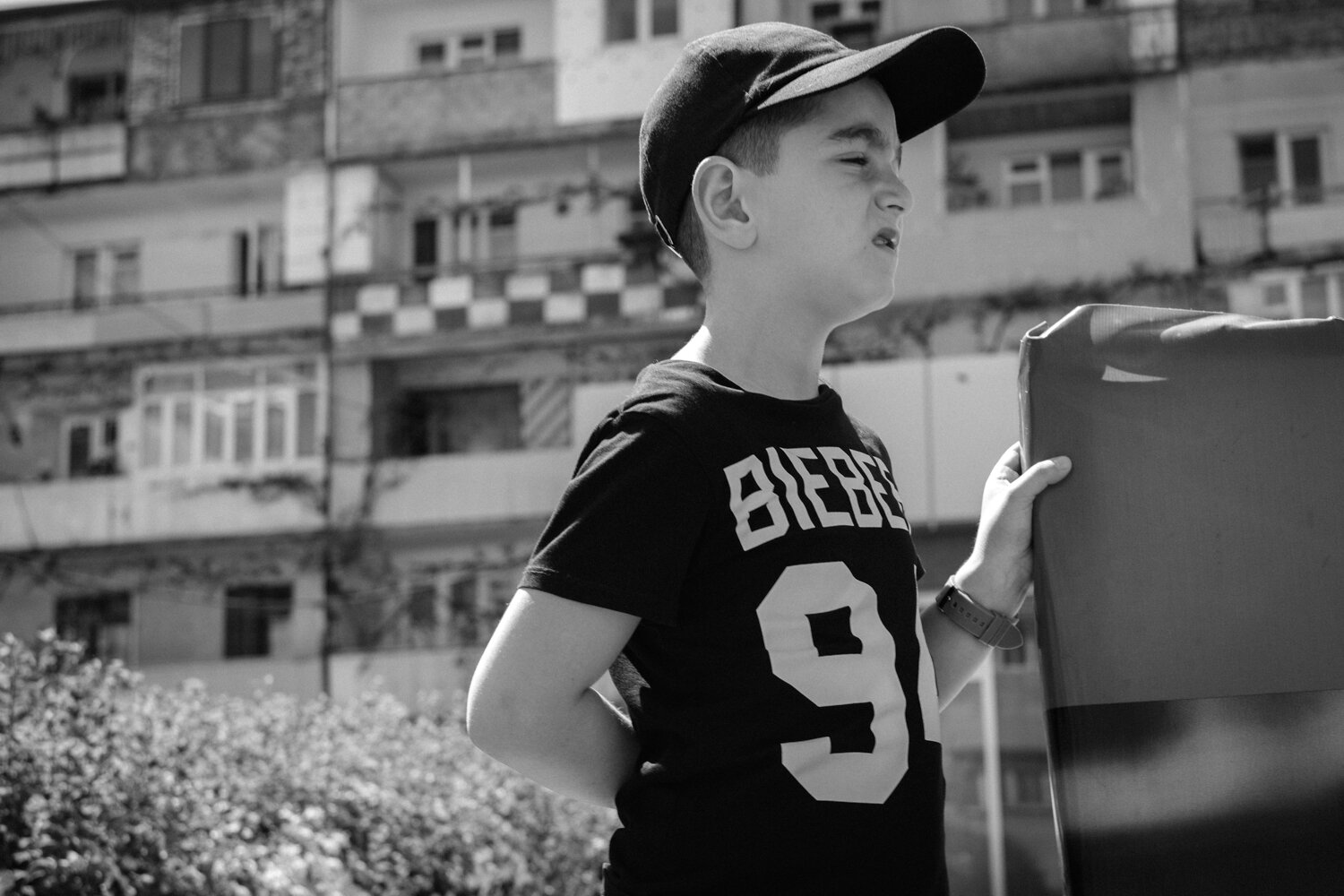

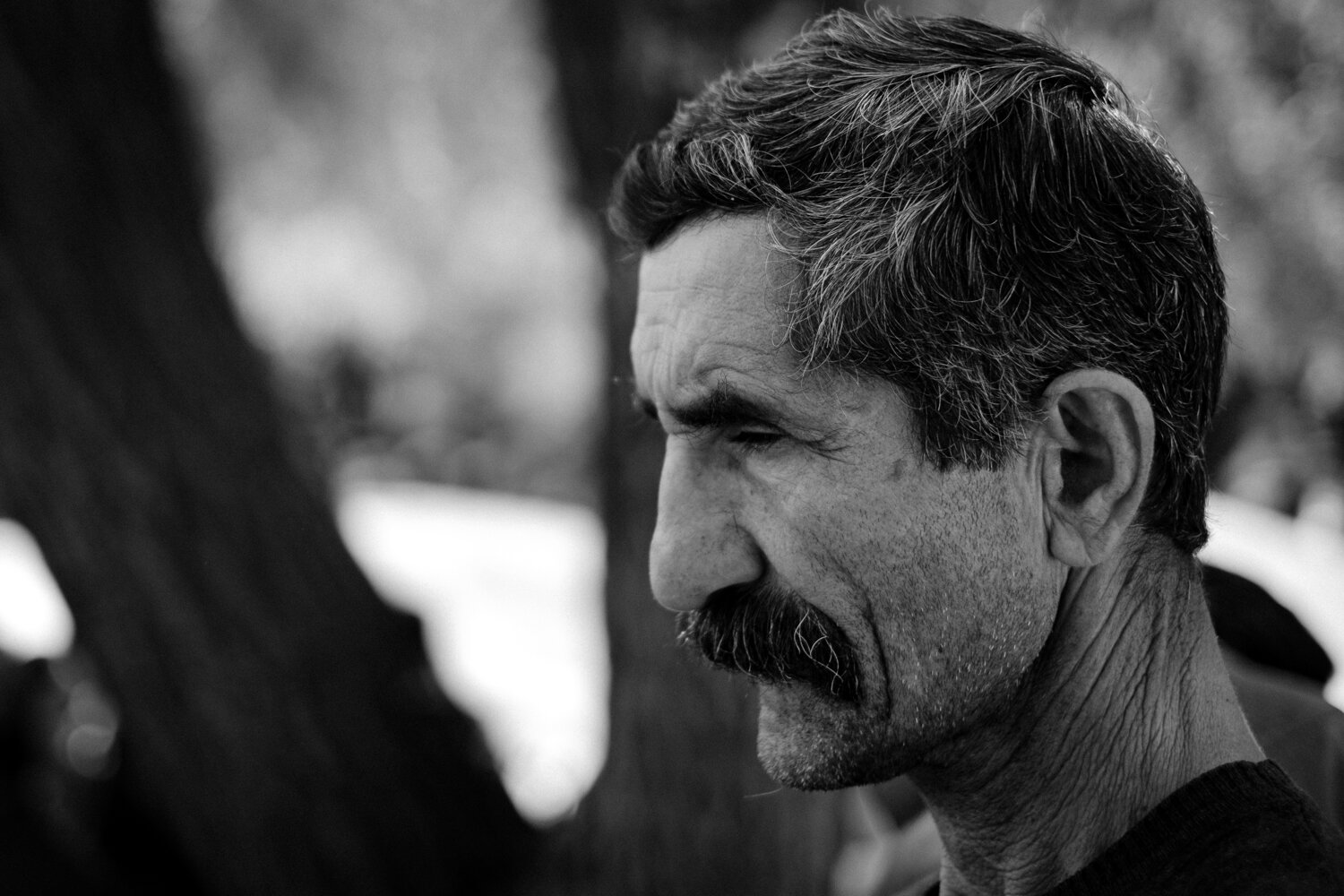
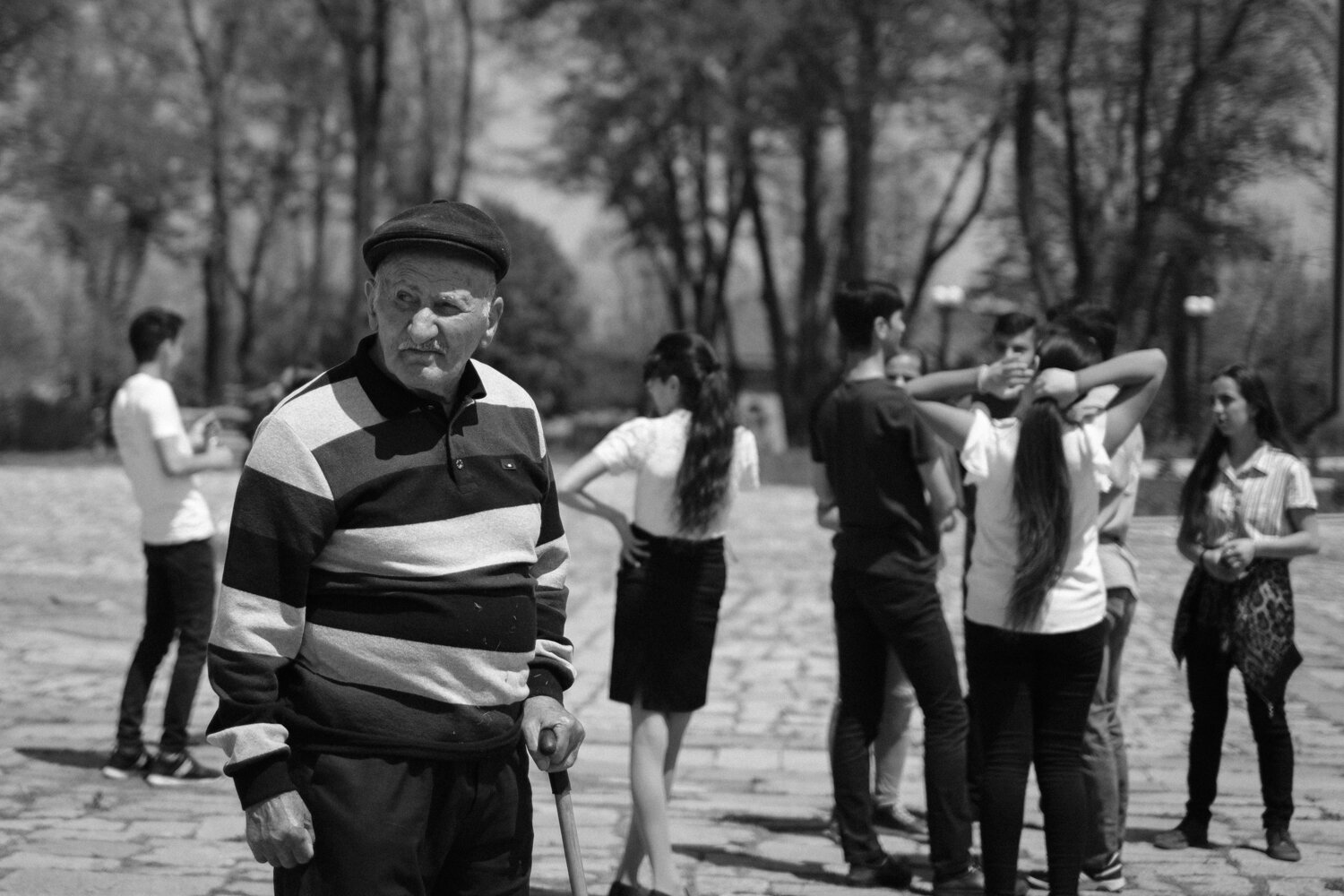
That afternoon, I drove out of Stepanakert and almost immediately up the winding mountain road to Shusha, past the remains of the 18th century fortress built by Panah Ali Khan, the first ruler of a Turkic kingdom that once controlled this land, and parked the Lada in front of a particularly ugly concrete building whose white ceramic bathroom tiles must once have glistened in the sun. A few tiles survived, hanging on tenaciously to the concrete shell as if their life depended on it.
In Wendell Steavenson’s book (published in 2002) she described the situation in Shusha less than a decade after the 1992-94 war. It was, she said, “…mostly burnt now, blackened blocks, walls, masonry; the Armenians have rebuilt their churches and left the mosques to rot. But you can still climb the minarets of one and look out over the magnificent view and imagine what it was. There are only three thousand people living in Shusha now; it’s sad and empty.”
It was still sad and empty. A few people wandered in and out of restored Ghazanchetsots Cathedral, white and alone on an empty plateau. A stall sold post-Communist fast-food, and one mosque rotted no longer after a restoration process that came across more like a token political gesture than a genuine reckoning with the town’s mixed Armenian-Azeri history. Hate and fear were undercurrent of life here, the basic truths that defined everything else; hatred of Azeris for the deaths of loved ones in the last war or the war before that (and so on), fear that Azerbaijan would be back. In the meantime, kids played in between Shusha’s tenement buildings, a barbecue was underway on a patch of grass that also doubled as a car park, and laundry hung strung out on long lines of wire from one side of the street to the other. A cat with a closed-up eye hissed at me as it dug for scraps in a rubbish tip.
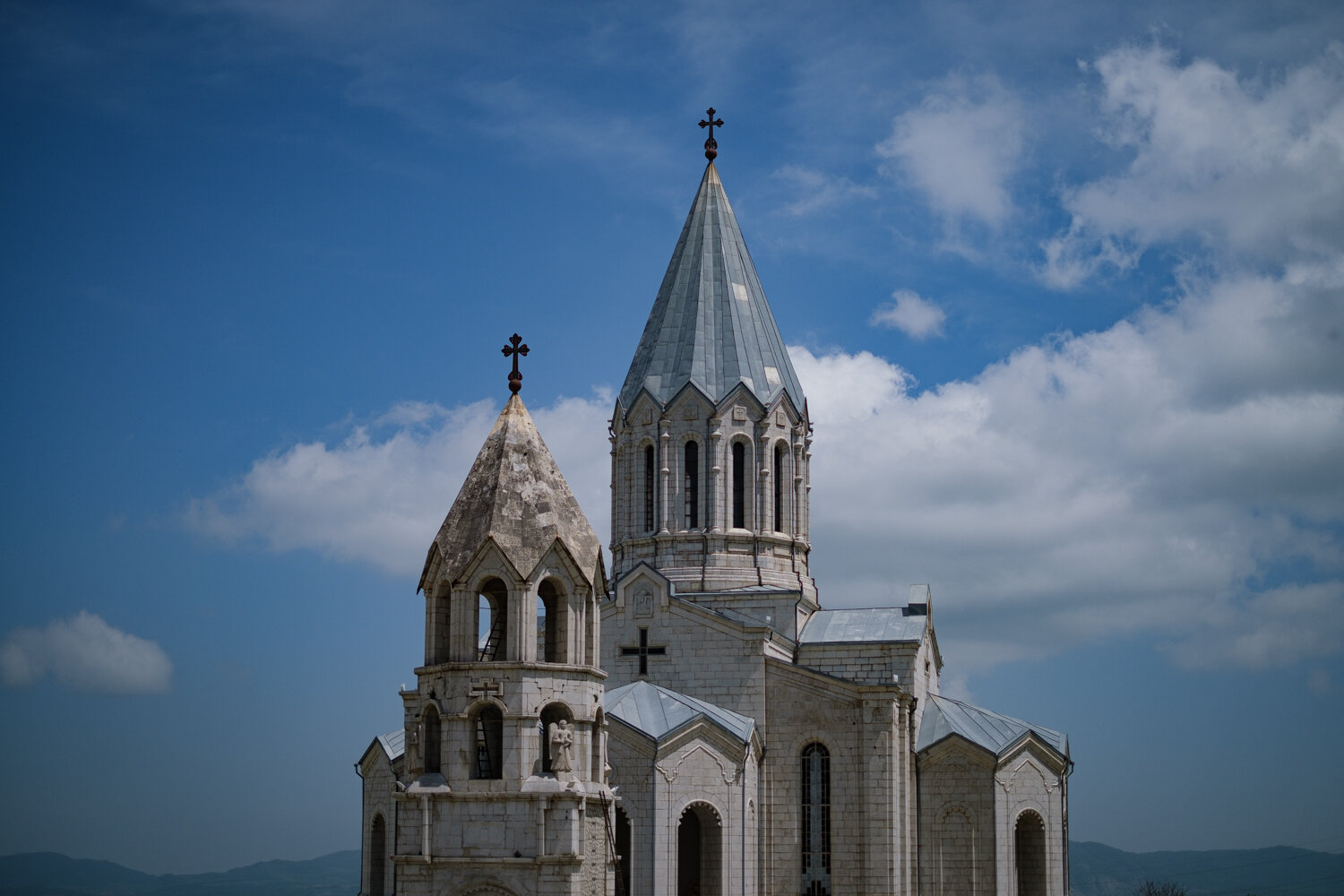
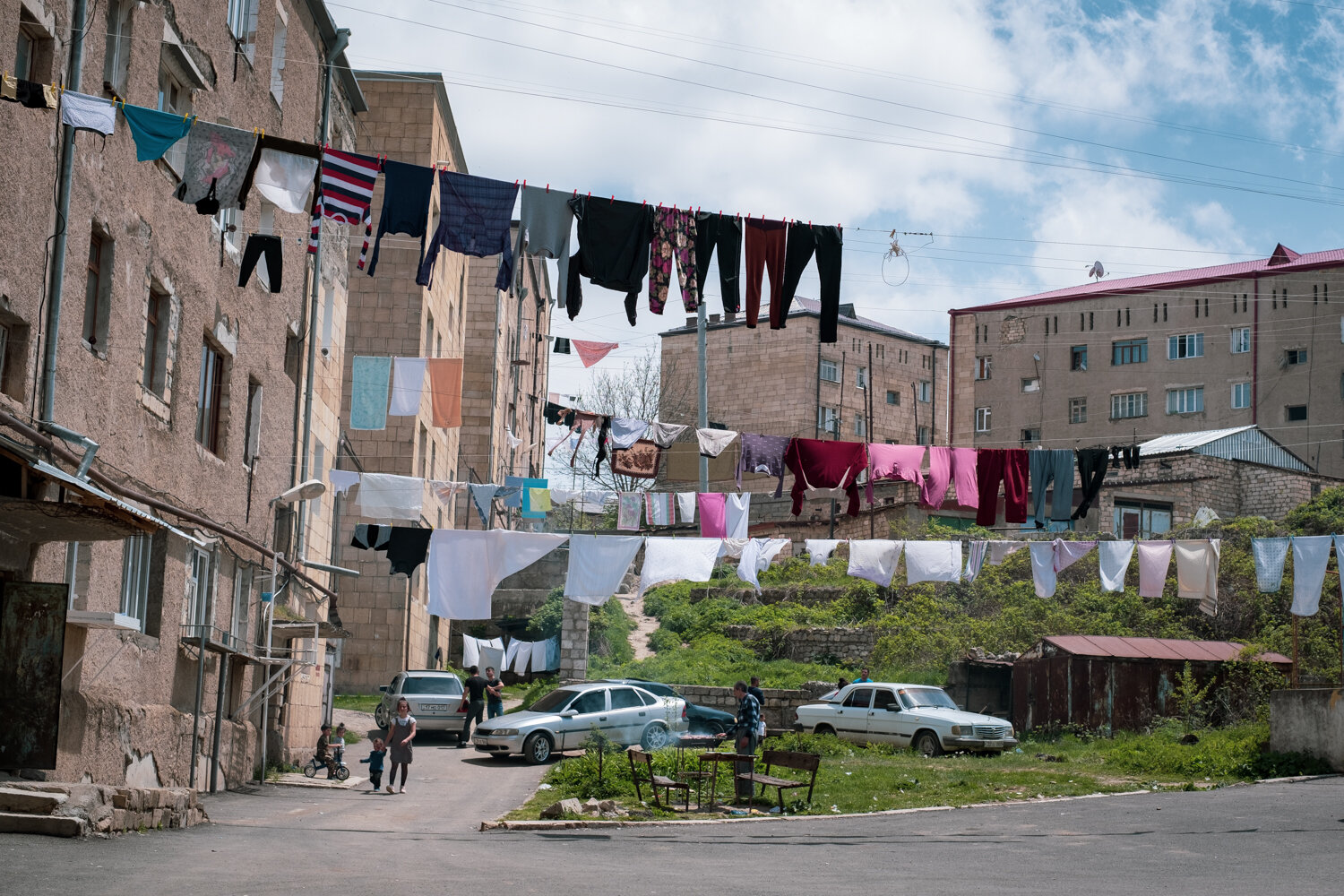
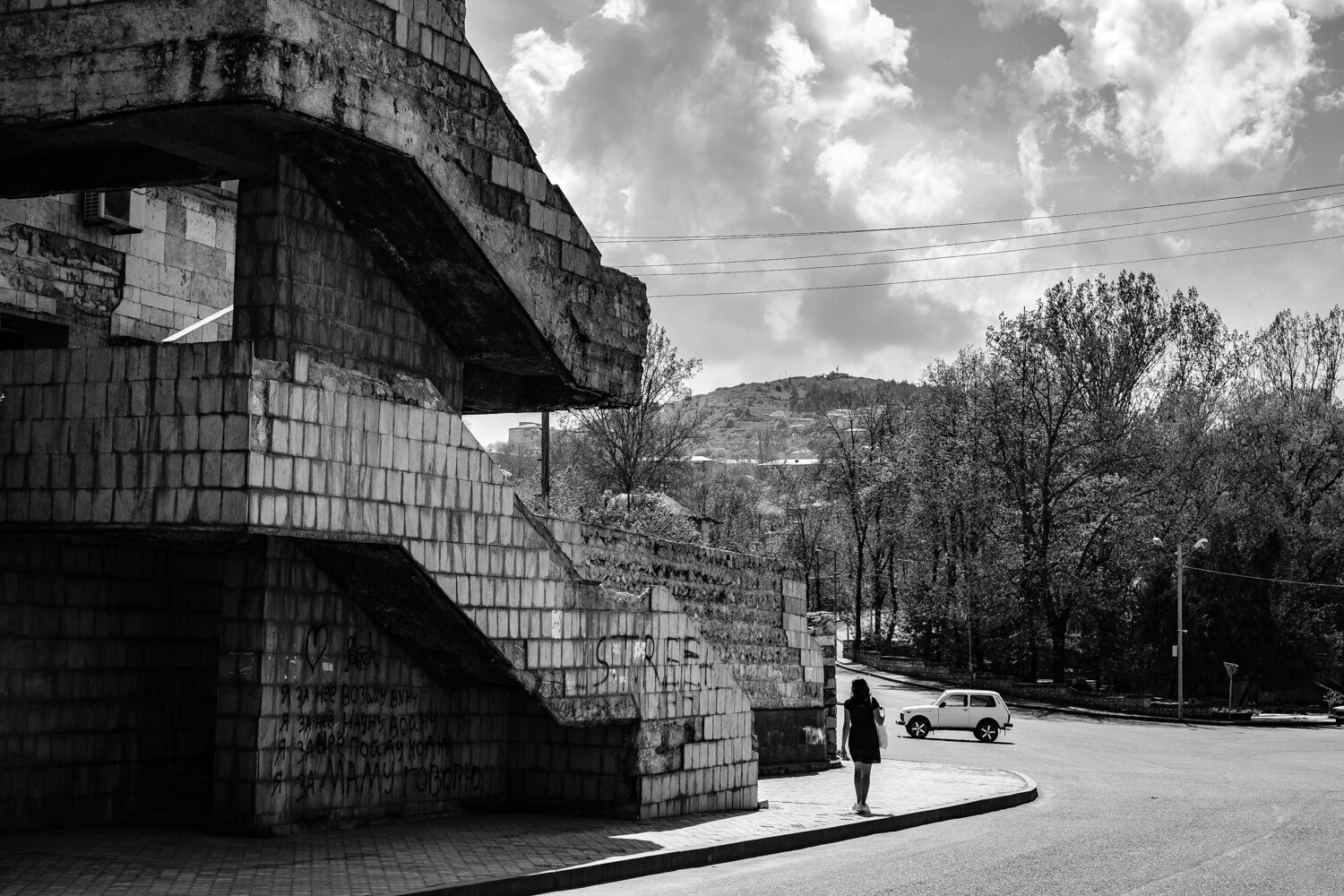
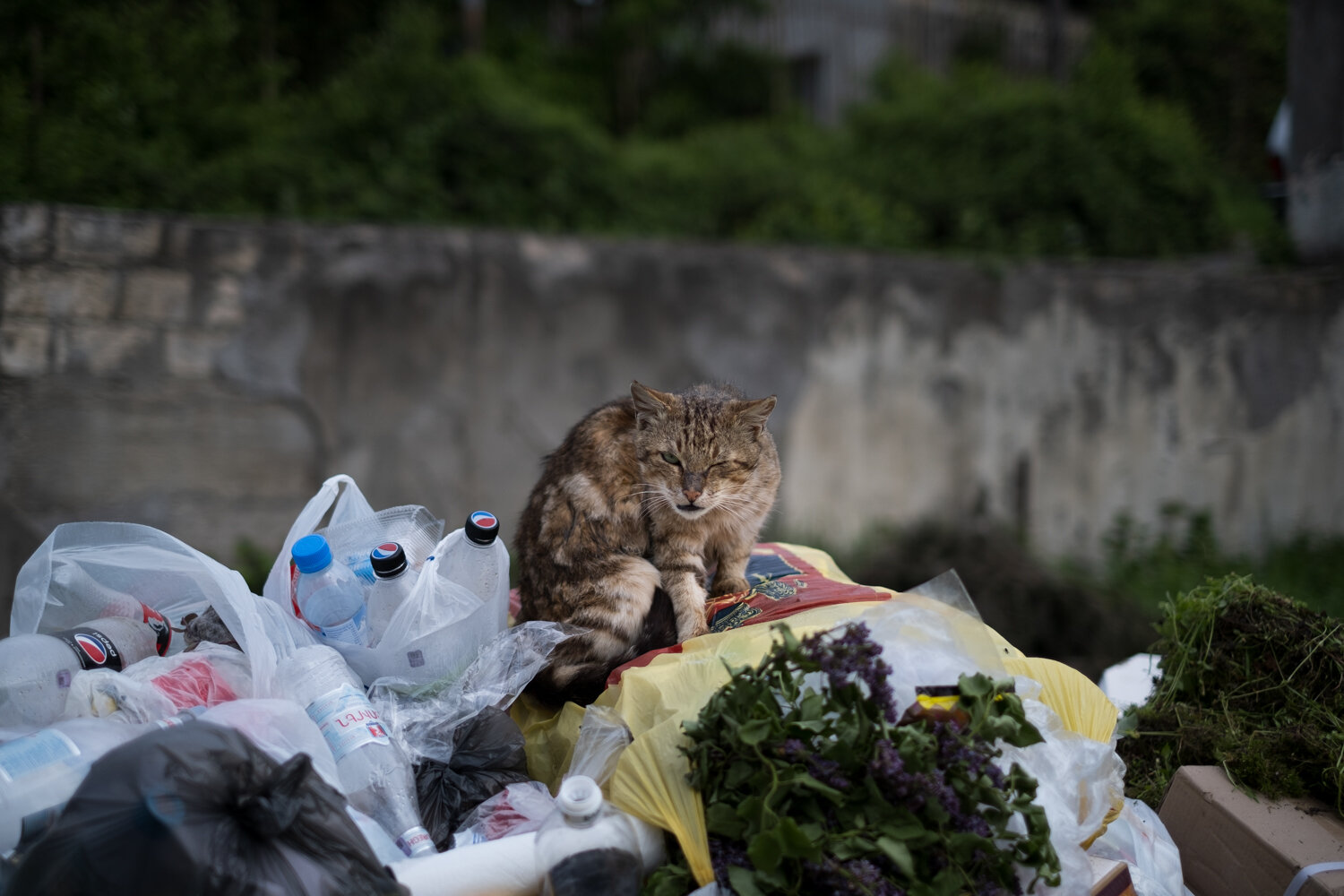
●
While writing the first draft of this piece, Azeri forces took back a large swathe of the occupied lands to the south and moved into Nagorno-Karabakh, approaching Shusha from the south. In a matter of days, despite the mountain fortress-like situation of Shusa, it fell. Azeri flags now fly above Shusha once more.
Under the ceasefire agreement between Armenia, Azerbaijan, and Russia, all of the occupied territories around the edges of Nagorno-Karabakh are in the process of being returned to Azerbaijan, and part of Nagorno-Karabakh proper—which includes Shusha—is also now under Azeri control after their military victories. Two thousand Russian peacekeepers have been flown in to keep the peace between the part of Nagorno-Karabakh that remains in Armenian hands and the rest, all controlled by Azerbaijan. There’s also a corridor between Nagorno-Karabakh and Armenia being kept open to the south—through the Lachin corridor—for Armenians to move between the two territories. How messy this all ends up being remains to be see. Russia has now succeeding in planting active troops in all three of the south Caucasus’s states again: Armenia, Georgia and Azerbaijan. In and around Nagorno-Karabakh, one feels that the Armenians will be happier they’re there than the Azeris.
Azerbaijan won this war because they had vastly superior firepower, including Turkish and Israeli military drones that rained down hell from above, and current geopolitics on their side. Israel’s involvement showed that a Jewish state was quite all right with selling bombs to a Muslim state to kill people from a Christian state. Russia has a defence pact with Armenia but decided fairly early on that they would only apply it if Armenia “proper” got attacked. Russia is also on friendly terms with the Azeris, though they don’t have a defence pact with them. The Azeris are a Turkic people and mostly Muslim, so with Turkey’s current Neo-Ottoman fantasies and its harried history with Armenians, it’s not very hard to see why it supported Azerbaijan, and also why they’re itching to get Turkish troops on Azeri soil too. In the 1992-94 war when Shusha was captured by the Armenians, the Turkish government was under a lot of internal pressure to directly intervene militarily, but the fear was this would turn it into an even bigger Christian-Muslim conflict, drag in the West, and perhaps kick off a regional—if not world—war. Don’t forget that World War I began with an event that didn’t initially have planetary implications: the Austrian Archduke being assassinated in Sarajevo.
Turkey is also part of NATO (which is by the way why Russia has troops inside Armenia on its border with Turkey — a closed border). Iran tried to keep its opinions well out of it, but that wasn’t tenable given that it borders Azerbaijan, Armenia, and Turkey, and had received a few stray missiles to boot. It came out and said it supported the territorial integrity of Azerbaijan, i.e., that Nagorno-Karabakh is part of Azerbaijan. This stance was void of much meaning in the sense that no country—not even Armenia itself, ever recognised Nagorno-Karabakh as a state or as a part of Armenia in the first place. Remember too that an estimated quarter of Iran’s population of 80 million is Azeri, and that it also has an Armenian community of around 70,000-200,000. These things matter.
Given all this, and Europe’s clear lack of influence in the region, Azerbaijan held most of the geopolitical trump cards, not to mention the best weapons and control of the skies. I wonder how many of the soldiers I photographed last year are now gone. Now that the fighting is over, Armenia has declared 2400 military casualties. Azerbaijan remains mum on how many of its young men died took to get this land back. Russian President Vladimir Putin pointed out that in the decade-long Soviet invasion of Afghanistan, “only” 15 000 servicemen died; this latest war lasted six weeks. War crimes involving cluster munitions were alleged against both sides; the 1992-94 war was also notorious for its two-way atrocities.
●
In Azerbaijan right now, hundreds of thousands of displaced Azeri civilians—ethnically cleansed refugees from the previous war—wait anxiously to see whether they’ll be able to return to where they lived before, in and around Nagorno-Karabakh. Azerbaijan has already announced that there is enough land to resettle half a million Azeris, and this was only the recovered land towards the Iranian border. All is this is lost, perhaps forever, by the Armenians. Though, as any student of history of this part of the world will tell you, forever usually just means, Wait a while.
●
I left Nagorno-Karabakh the day after the military parade, heading south from Stepanakert on the main highway to Armenia, past Shusha on the hill up to the left, and through and up the wild Lachin corridor, the one now patrolled by Russian peacekeepers.
Not far before the Armenian border at a wide turn in the road, the flowers of spring and the green, mountainous magnificence all around became so fantastic in my mind that I pulled over, grabbed the camera, got out of the trusty Lada and snapped away as if my life depended on it. A car drove past and the driver yelled out the window at me with what seemed like anger. A furry black bug, sipping pollen from a yellow flower at the edge of a field caught my attention as it hung on tight and wouldn’t let go as the wind shook it. I looked back towards the mountains of Nagorno-Karabakh, and remembered: Nagorno means mountainous in Russian, Kara means black in Turkish, and Bakh means garden in Persian.
Spring in the Lachin corridor.
© Kevin Bleakley, November 2020

